Inbox and Environment News: Issue 448
May 3 - 9, 2020: Issue 448
Seal At Avalon Beach
North Avalon Beach has been visited by an Australian fur seal in recent days - this great video by Mike Stanley Jones of Avalon Beach SLSC, shares one of the wonderful aspects of living here.
 New Shorebird Identification Booklet
New Shorebird Identification Booklet
The Migratory Shorebird Program has just released the third edition of its hugely popular Shorebird Identification Booklet. The team has thoroughly revised and updated this pocket-sized companion for all shorebird counters and interested birders, with lots of useful information on our most common shorebirds, key identification features, sighting distribution maps and short articles on some of BirdLife’s shorebird activities.
The booklet can be downloaded here in PDF file format: http://www.birdlife.org.au/documents/Shorebird_ID_Booklet_V3.pdf
Paper copies can be ordered as well, see http://www.birdlife.org.au/projects/shorebirds-2020/counter-resources for details.
Download BirdLife Australia's children’s education kit to help them learn more about our wading birdlife
Shorebirds are a group of wading birds that can be found feeding on swamps, tidal mudflats, estuaries, beaches and open country. For many people, shorebirds are just those brown birds feeding a long way out on the mud but they are actually a remarkably diverse collection of birds including stilts, sandpipers, snipe, curlews, godwits, plovers and oystercatchers. Each species is superbly adapted to suit its preferred habitat. The Red-necked Stint is as small as a sparrow, with relatively short legs and bill that it pecks food from the surface of the mud with, whereas the Eastern Curlew is over two feet long with a exceptionally long legs and a massively curved beak that it thrusts deep down into the mud to pull out crabs, worms and other creatures hidden below the surface.
Some shorebirds are fairly drab in plumage, especially when they are visiting Australia in their non-breeding season, but when they migrate to their Arctic nesting grounds, they develop a vibrant flush of bright colours to attract a mate. We have 37 types of shorebirds that annually migrate to Australia on some of the most lengthy and arduous journeys in the animal kingdom, but there are also 18 shorebirds that call Australia home all year round.
What all our shorebirds have in common—be they large or small, seasoned traveller or homebody, brightly coloured or in muted tones—is that each species needs adequate safe areas where they can successfully feed and breed.
The National Shorebird Monitoring Program is managed and supported by BirdLife Australia.
This project is supported by Glenelg Hopkins Catchment Management Authority and Hunter Local Land Services through funding from the Australian Government’s National Landcare Program. Funding from Helen Macpherson Smith Trust and Port Phillip Bay Fund is acknowledged.
The National Shorebird Monitoring Program is made possible with the help of over 1,600 volunteers working in coastal and inland habitats all over Australia.
The National Shorebird Monitoring program (started as the Shorebirds 2020 project initiated to re-invigorate monitoring around Australia) is raising awareness of how incredible shorebirds are, and actively engaging the community to participate in gathering information needed to conserve shorebirds.
In the short term, the destruction of tidal ecosystems will need to be stopped, and our program is designed to strengthen the case for protecting these important habitats.
In the long term, there will be a need to mitigate against the likely effects of climate change on a species that travels across the entire range of latitudes where impacts are likely.
The identification and protection of critical areas for shorebirds will need to continue in order to guard against the potential threats associated with habitats in close proximity to nearly half the human population.
Here in Australia, the place where these birds grow up and spend most of their lives, continued monitoring is necessary to inform the best management practice to maintain shorebird populations.
BirdLife Australia believe that we can help secure a brighter future for these remarkable birds by educating stakeholders, gathering information on how and why shorebird populations are changing, and working to grow the community of people who care about shorebirds.
To find out more visit: http://www.birdlife.org.au/projects/shorebirds-2020/shorebirds-2020-program
Ella: Green Turtle Rescued From Manly
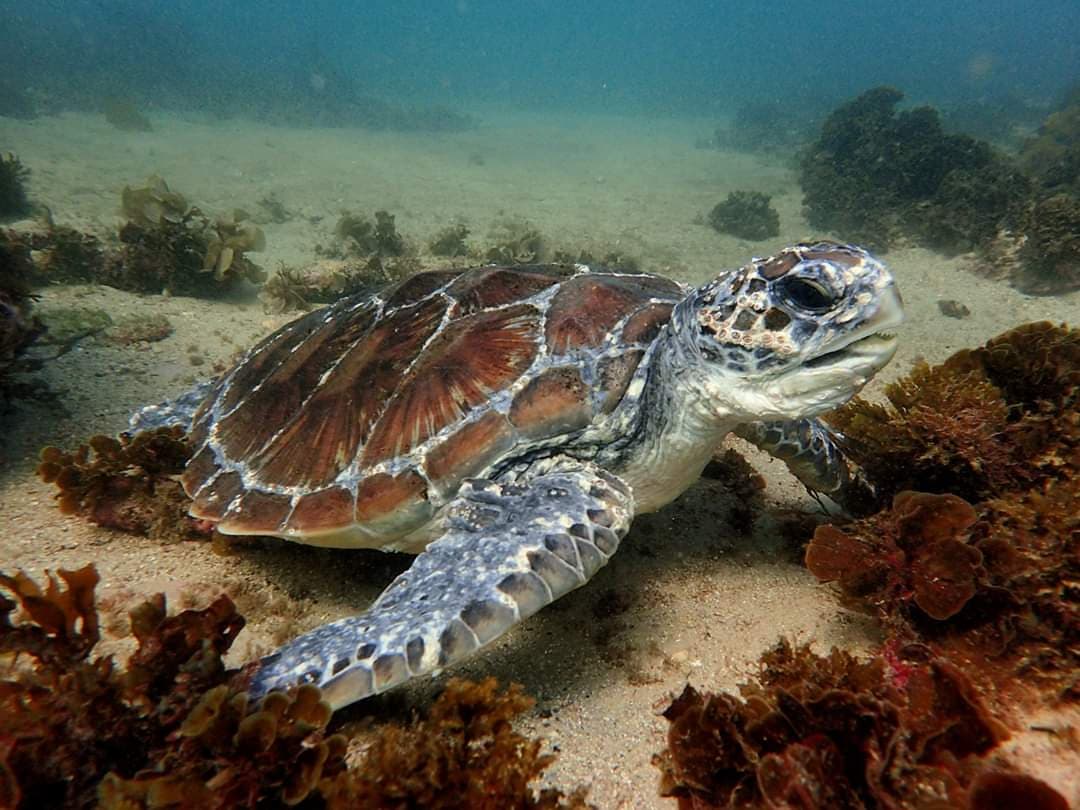
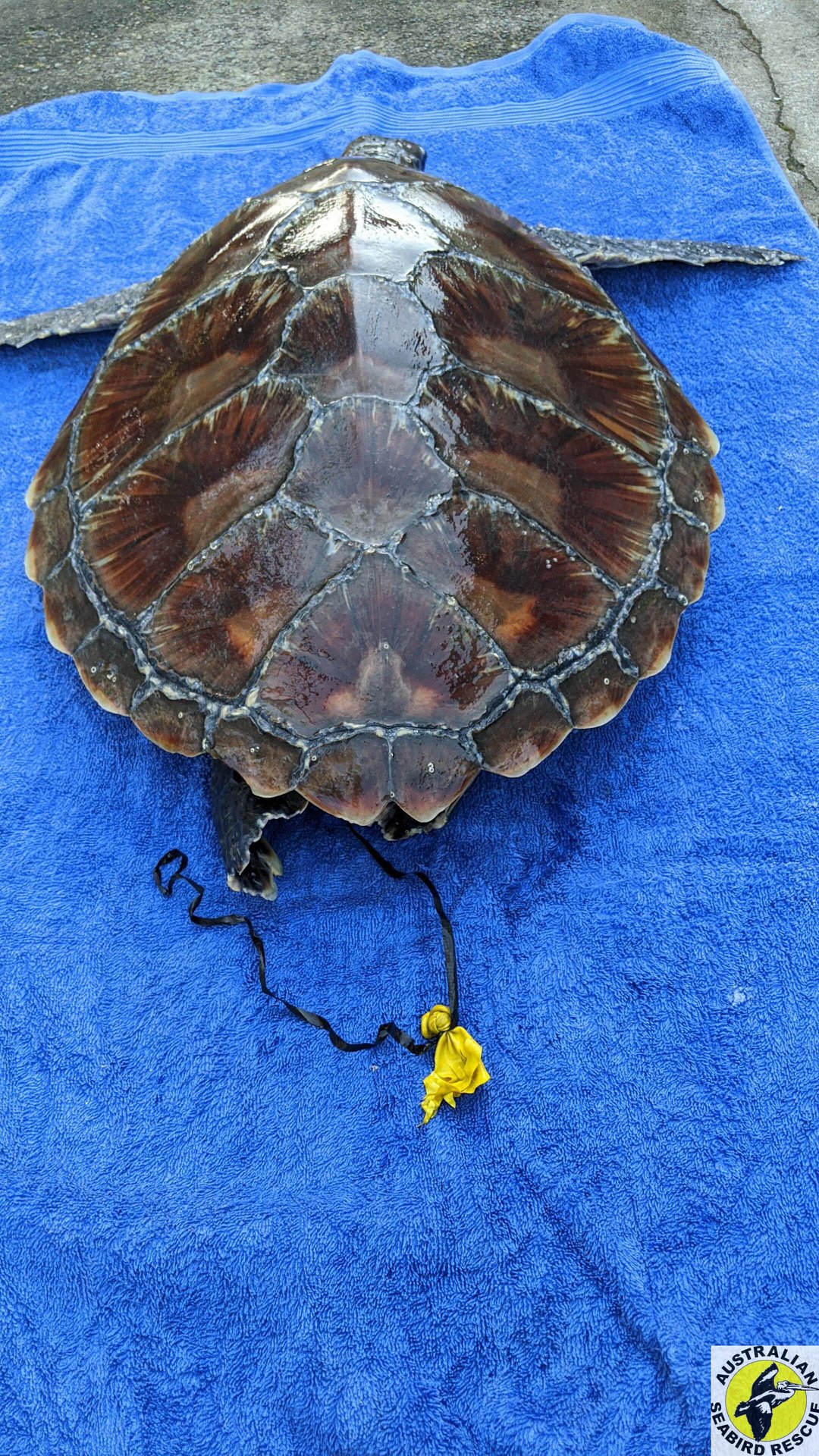
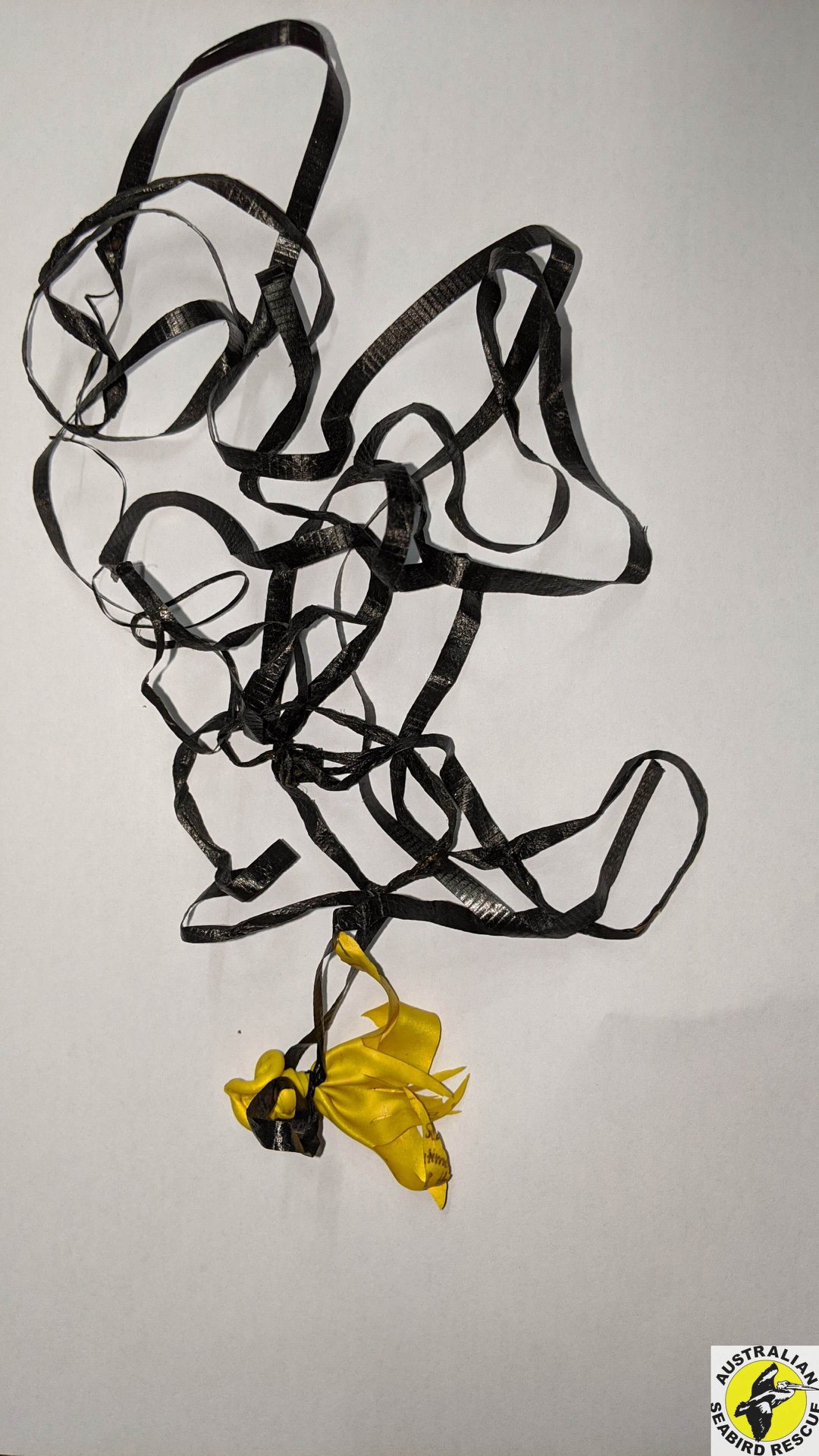
Council Has Native Plants For Your Home
Council's Backyard Habitat program is focused on helping you create a native habitat garden that attracts birds, bees, butterflies and other native species.
To launch the program they’re giving away plants that have been caringly propagated by our Bushcare volunteers from locally sourced seeds at our community nurseries at Manly Dam and Curl Curl.
Due to COVID-19, bushcare volunteers are at home and we are not able to use these plants as intended – new plantings to help regenerate public bushland and as gifts for new Australian citizens – so council wants them to go happy homes.
Growing these in your backyard will help create wildlife corridors for our native animals to move safely between our bushland reserves, whilst maybe grabbing a bite to eat along the way!
The team will match the right plants with the right homes and will also hand deliver the plants to each home. To help the plants thrive specialist bush regeneration staff will offer ongoing advice on how to care for them too.
This program will initially be offered to the first 600 households with backyards to apply.
How do I get involved?
Follow these easy steps to get involved:
- Register by completing the online form
- Provide accurate details about your garden so that we can offer the most suitable plants. Include details of those areas where you would like to plant natives, how much sun/shade there is, type of soil (if known), if it's dry or damp, on the north/south/east/west boundary, etc.
- Wait for one of our team to contact you to arrange delivery.
- Plant, water and care for your plants.
- Share pictures of your plants with us once they’re established and thriving, and then again after six and 12 months.
More information
Contact council for more information.
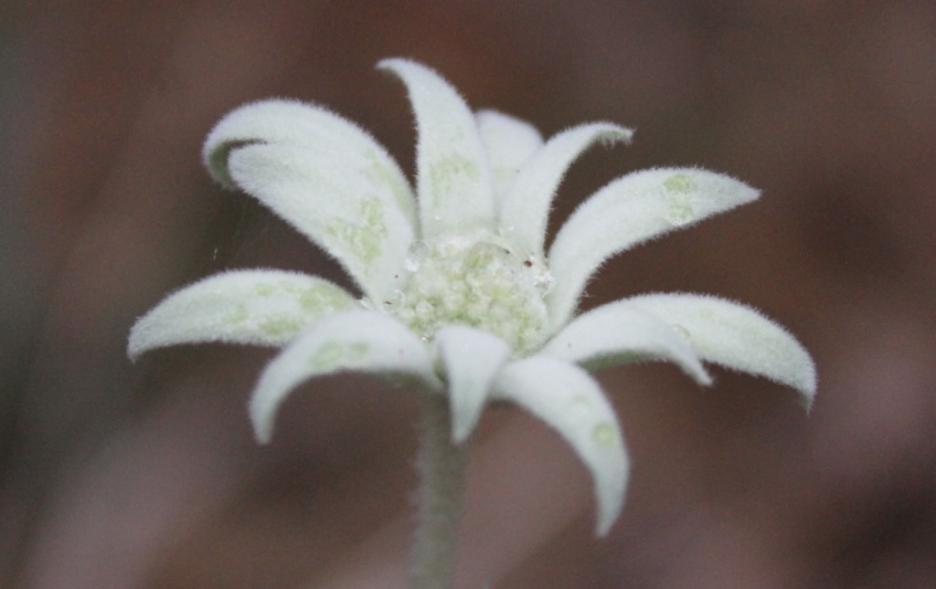
Eurobodalla Koala Enthusiasts Back Wild Koala Day: Sunday May 3
Wild Koala Day is this Sunday 3rd May. A group of Eurobodalla enthusiasts is keen to mobilize the local community for a koala population revival. They are celebrating Wild Koala Day by launching a new website eurokoalas.com
Wild Koala Day was the brainchild of Janine Duffy, President of Victoria’s Koala Clancy Foundation a few years ago. It is celebrated annually by koala support groups and koala businesses especially in Queensland and NSW where wild populations are declining dramatically.
Coordinator of our own volunteer Eurobodalla Koalas Project Dr Keith Joliffe said “There are still wild koalas in the Eurobodalla but they’re very scarce.”
“Since the fires there have been two sightings, one at East Lynne and one in Bodalla State Forest,” he said
“Before that we hadn’t heard of one since 2013 at Nerrigundah village. We’d like the local population revived to the point where it no longer teeters on the edge of extinction,” he said.
Dr Joliffe explained that his group is conducting a Commonwealth-funded ground-truthing project, a public awareness exercise and is revising a published local recovery strategy.
“We also want to encourage land managers, businesses and the general community to adopt an entrepreneurial approach to the Eurobodalla’s koala story and continuing habitat for commercial, cultural and biodiversity reasons,” Dr Joliffe said.
Local residents can report sightings directly to National Parks and Wildlife Service at Narooma, or to Dr Joliffe and his helpers through eurokoalas.com
Go to wildkoaladay.com.au for more ways you can help koalas from home.
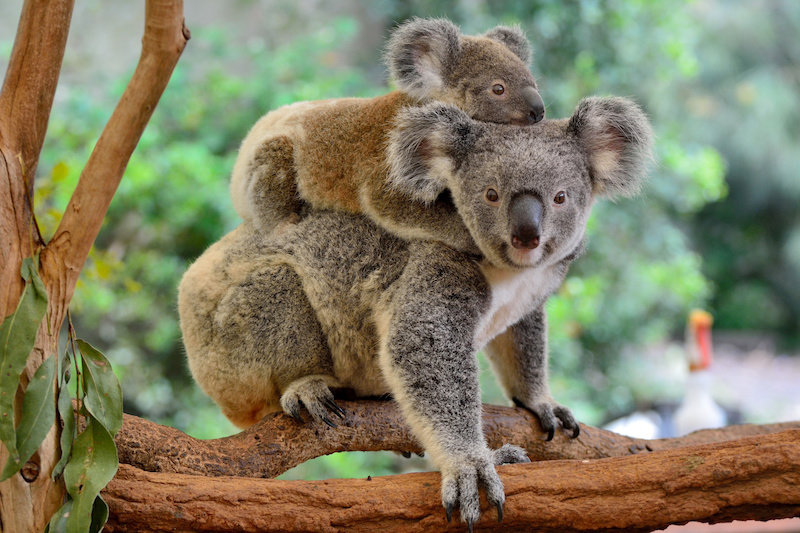
About us – the charity groups behind Wild Koala Day
We are a group of koala charities, not for profit organisations, wildlife carers and concerned individuals that fight for wild koalas. We come from all over Australia, and around the world. Please read about us and feel welcome to connect with us.
You don’t have to be a koala charity to be involved – we welcome anyone and everyone to become a supporter of Wild Koala Day.
- Eurobodalla Koalas Project
- Help Save the Wildlife and Bushlands in Campbelltown
- Port Stephens Koalas
- Hunter Koala Preservation Society
- Koala Gardens at Tuckurimba
- Animal Link Foundation
- Bangalow Koalas Inc
Cleaning Up Our Act: Redirecting The Future Of Plastic In NSW
- Phase out key single-use plastics
- Triple the proportion of plastic recycled in NSW across all sectors and streams by 2030
- Reduce plastic litter items by 25% by 2025
- Make NSW a leader in national and international research on plastics
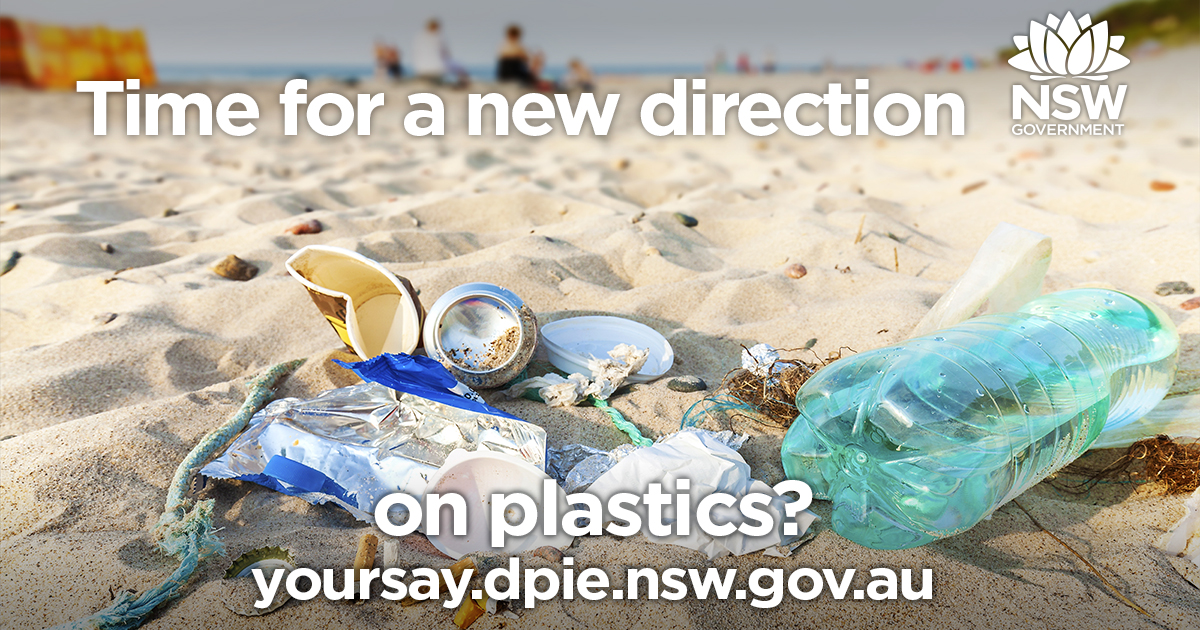
20-Year Waste Strategy For NSW
- Generate less waste
- Improve collection and sorting
- Plan for future infrastructure
- Create end markets
Snowy River High-Flows To Commence In June
April 28, 2020
The first of four planned high-flow environmental water releases during winter and spring to the Snowy River are set to commence in late June, NSW Department of Planning, Industry and Environment Acting Director Water Planning Implementation, Allan Raine, said today.
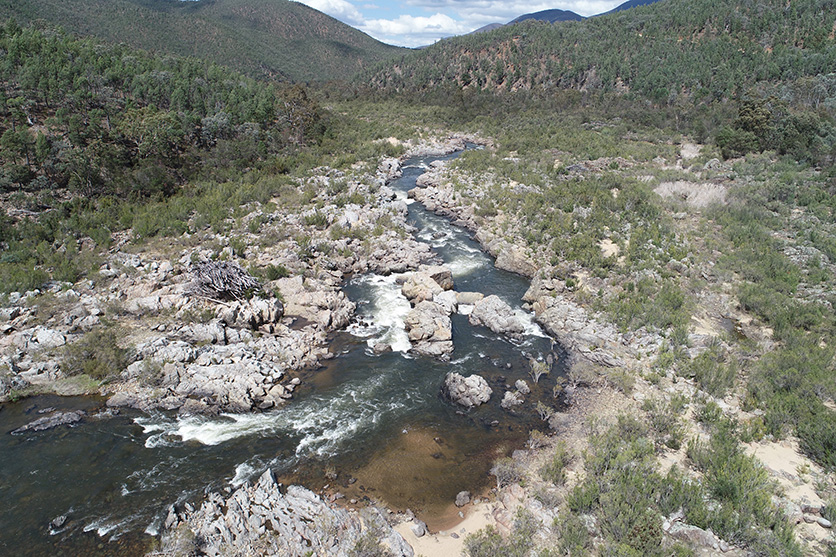
Snowy Rivers at Pinch Falls
‘These high-flow water releases are designed to better mimic the natural flow characteristics that are seen in Snowy Mountain rivers, with the aim of improving the long-term health of the iconic Snowy River,’ Mr Raine said.
‘The release of environmental water into the Snowy River over a series of high-flow events has been successfully trialled over a number of years.
‘This year there are two scheduled releases in winter and two in spring, to reflect the natural timing of likely high-flow events, while the amount of water being released this year is less than previous years as a direct result of the drought.
‘Downstream landholders and visitors to the area are being encouraged to make appropriate plans ahead of the water releases, including moving stock or pumps and infrastructure to higher ground and being aware of flows.’
The planned 2020 high-flow releases are:
- Monday 29 June 2020 – equivalent peak flow 3,500 megalitres (ML)/day (d) for eight hours
- Monday 27 July 2020 – equivalent peak flow 1,600 ML/d for eight hours
- Thursday 3 September 2020 – equivalent peak flow 4,500 ML/d for eight hours (largest flow)
- Wednesday 28 October 2020 – equivalent peak flow 1,500 ML/d for eight hours
‘This flow pattern includes a higher degree of daily and seasonal flow variability which assists the river to re-establish stream function, including scouring and improve in-stream habitat.’
Mr Raine said the results from previous studies show the Snowy River is responding well to these seasonal high-flow events and this continuing approach had received input this year from the Snowy Advisory Committee.
‘This year’s high-flow events consist of four smaller release events over winter and spring as a result of the limited water availability due to the severity of the drought, which reflects the natural cycles of the Snowy system.
‘This series of winter/spring releases will help to promote channel function within the remnant bed of the Snowy River, wet the riparian zone and promote the establishment of aquatic and riparian vegetation,’ said Mr Raine.
Environmental water releases to the Snowy River are mandated under the Snowy Water Inquiry Outcomes Implementation Deed 2002, a tri-government agreement between the Australian, New South Wales and Victorian Governments, to achieve improvements in Snowy River health.
View further information about the Snowy River environmental releases.
Water Compliance Increasing: NRAR Triples Prosecutions As It Hits Its Second Anniversary
April 30, 2020
Water compliance is increasing in NSW, thanks to the actions of the Natural Resources Access Regulator (NRAR) who this week marked its second anniversary, and tripled prosecution for water theft and lack of compliance earlier this month.
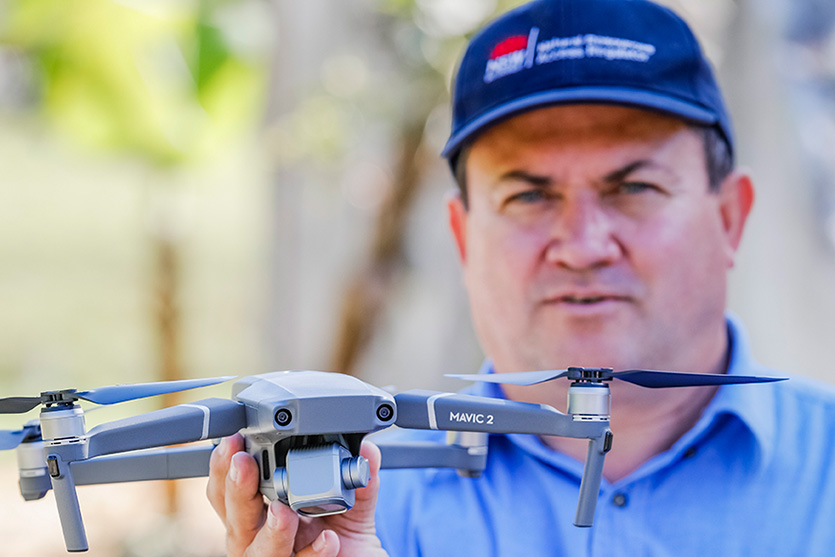
Since its formation, NRAR has commenced 20 prosecutions in court, undertaken 1,119 regulatory actions and cleared a backlog of 483 cases it inherited from previous water management agencies.
NRAR Chief Regulatory Officer Grant Barnes said NRAR as played a vital role in helping NSW communities deal with the worst drought on record.
“NSW communities needed to know they could rely on a strong water compliance authority to make sure water was shared fairly and protected. NRAR has become a world-class regulator and will continue to ensure lawful water use into the future,” he said.
As a modern regulator, NRAR is adopting new technologies to ensure water compliance. It now uses satellite imagery analysis and drones, and is an advisor behind the scenes on the government’s new telemetry system.
These technologies helped NRAR run 16 compliance and/or investigative campaigns since inception, four of those this year. A small number of these have been running for many months or in staggered phases as they target known hotspots of non-compliance.
Compliance campaigns are run alongside investigations of suspicious activity reports by the public. Reports are prioritised so that those with the potential to cause the most harm to waterways, water users or the environment are targeted first.
“We are building a compliance regime that protects the value of water from those who seek to obtain it unlawfully. Each action we take goes towards building and maintaining public trust and confidence in water regulation,” said Mr Barnes.
“We require the highest ethical standards of our people, with accountability, integrity, service and trust, as we resolutely commit to act transparently in the public interest at all times, and protect our independence.”
Chair of NRAR’s Board, the Hon. Craig Knowles AM, said the NRAR Board was proud of NRAR’s performance and its high standards of service and integrity.
“NRAR’s second anniversary results show a regulator targeting those causing most harm to our river systems and constantly seeking out the best way to do so. I congratulate Grant Barnes and all of the NRAR team for showing such solid results in only two years."
NRAR’s investigators and compliance officers travel all over the state’s 58 water sharing plan areas, inspecting properties and assessing compliance with water users’ licences and the Water Management Act 2000.
The regulator has continued its vital work during the COVID-19 lockdown period while observing NSW Health recommendations to ensure the safety of water users and staff.
To see the work NRAR does, go to its public register on the NRAR website.
To make a confidential report on suspected water misuse, contact the NRAR Hotline on 1800 633 362 or email nrar.enquiries@nrar.nsw.gov.au. For more information about NRAR and what it does, visit industry.nsw.gov.au/nrar.
Air quality near busy Australian roads up to 10 times worse than official figures

Air quality on Australia’s roads matters. On any given day (when we’re not in lockdown) people meet, commute, exercise, shop and walk with children near busy streets. But to date, air quality monitoring at roadsides has been inadequate.
I and my colleagues wanted to change that. Using materials purchased from electronics and hardware stores for around A$150, we built our own air quality monitors.
Our newly published research reveals how our devices detected particulate pollution at busy intersections at levels ten times worse than background levels measured at official air monitoring stations.
Our open-source design means citizen scientists can make their own devices to measure air quality, and make the data publicly available.
This would provide more valuable data about city traffic pollution, giving people the information they need to protect their health.

Particulate Matter: A Tiny Killer
Everyone is exposed to airborne particulate matter emitted by industry, transport and natural sources such as bushfires and dust storms.
Particulate matter from traffic is a mixture of toxic compounds, both solid and liquid. It’s a well-known health hazard, particularly for children, the elderly, pedestrians, cyclists and people working on or near roads.
Particulate matter smaller than 2.5 micrometres in diameter, referred to as PM2.5, is particularly harmful. To put this in context, a human hair is about 100 micrometres in width.
When inhaled, these fine particles can damage heart and brain function, circulation, breathing and the immune and endocrine systems. They have also been linked to cancer and low birth weight in newborns.
Do-It-Yourself Air Monitoring
Highly reliable equipment to measure air quality has traditionally been expensive, and is not deployed widely.
Official air quality monitoring usually takes place open spaces or parks, to provide an averaged, background reading of pollution across a wide area. The monitoring stations are not typically placed at pollution sources, such as power stations or roads.
However there is growing evidence that people travelling outdoors near busy city roads are exposed to high levels of traffic emissions.
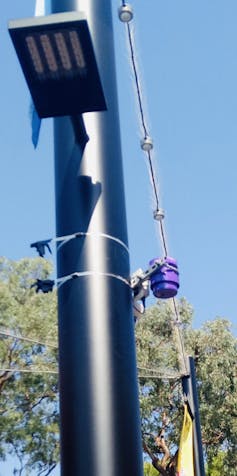
Air quality monitors can be bought off the shelf at low cost, but their readings are not always reliable.
So I and other researchers at the University of Wollongong’s SMART Infrastructure Facility made our own monitors. They essentially consist of a sensor, weatherproof housing, a controller and a fan. Anyone with basic electronics knowledge and assembly skills can make and install one. The monitor connects to the internet (we used The Things Network) and the software required to run it and collect the data is available for free here.
The weatherproof housing cost about A$16 to make. It consists of PVC plumbing parts, a few screws and small pieces of fibreglass insect screen, which can be bought at any hardware store.
Sensors can be bought from electronics retailers for little as A$30, but many are not tested, calibrated or overseen by experts and can be inaccurate. We tested three, and chose the Novasense SDS011, which we bought for A$32.
A controller is needed to run the monitor and send data to the internet. We bought ours from an online retailer for under A$60. A fan, needed to circulate air through the housing, was bought from Jaycar for A$14.
Accounting for wiring and a few other parts, our monitors cost under A$150 each to make - ten times cheaper than mid-grade commercial detectors – and produce reasonably accurate results.
What We Found
Following community meetings, we deployed our sensors at nine key locations and intersections around Liverpool in Western Sydney, a region which has traditionally suffered from poor air quality.
Our monitors have been in place since March 2018, placed close to pedestrian height on structures such as light poles, shade awnings or walls.
Read more: Australia needs stricter rules to curb air pollution, but there's a lot we could all do now
They have detected roadside measurements of PM2.5 at values of up to 280 micrograms per cubic metre in morning peak traffic. This is more than ten times the readings at the nearest official monitoring station. The severity of the pollution and how long it lasts depends on how bad the traffic is.
These findings are comparable to other studies of busy roads.
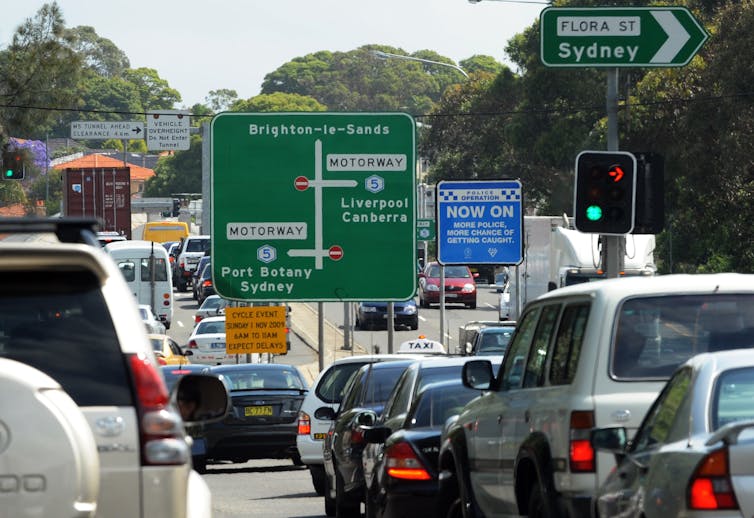
Breathing Easier
Our experience of roadside air quality can be improved in a number of ways.
Obviously, exposure to air pollution is worst at peak traffic times, so plan your travel to avoid these times, if possible.
Pollution levels drop quickly with distance from busy roads and can be at near background levels just one block away. So try to detour along quieter back streets or through parks.
Barriers, such as dense roadside vegetation, can shield pedestrians from pollution. Children in prams are more exposed to traffic pollution than adults, as they are closer to the level of vehicle exhaust pipes. Pram covers can reduce infants’ exposure by up to 39%.
Of course, the best way to reduce air pollution from traffic is to have fewer vehicles on our roads, and cleaner fuel and engines.
In the meantime, we hope our low-cost technology will prompt citizen scientists to develop their own sensors, producing the data we need to breathe easy in city streets.
Read more: Even for an air pollution historian like me, these past weeks have been a shock ![]()
Hugh Forehead, Research Fellow, University of Wollongong
This article is republished from The Conversation under a Creative Commons license. Read the original article.
Can't go outside? Even seeing nature on a screen can improve your mood

Are you feeling anxious or irritated during the coronavirus lockdown? Do you constantly want to get up and move? Maybe you need a moment to engage with nature.
Getting into the great outdoors is difficult at right now. But our research soon to be published in Australian Forestry shows you can improve your mood by experiencing nature indoors. This could mean placing few pot plants in the corner of your home office, or even just looking at photos of plants.
Our work adds to a compelling body of research that shows being around nature directly benefits our mental health.

Biophilia
Public gardens and parks, street verges with trees and bushes, and even rooftop gardens bring us a broad range of benefits – boosting physical health, reducing air pollution, and even lowering crime rates.
Read more: Biodiversity and our brains: how ecology and mental health go together in our cities
But inside, in your hastily constructed home office or home school room, you may be unable to take full advantage of urban nature.

Embracing the notion of “biophilia” – the innate human affinity with nature – while locked down inside may improve your productivity and even your health.
The biophilia hypothesis argues modern day humans evolved from hundreds of generations of ancestors whose survival required them to study, understand and rely on nature. So a disconnection from nature today can cause significant issues for humans, such as a decline in psychological health.
In practice at home, connecting with nature might mean having large windows overlooking the garden. You can also improve working conditions by having natural materials in your office or school room, such as wooden furniture, natural stones and pot plants.
Indoor Plants
Our research has demonstrated that even a small number of plants hanging in pockets on along a busy corridor provide enough nature to influence our physiological and psychological perceptions.
These plants even caused behavioural differences, where people would change their route through a building to come into contact with the indoor plants.
We surveyed 104 people, and 40% of the respondents reported their mood and emotions improved in the presence of indoor plants.
They felt “relaxed and grounded” and “more interested”. The presence of indoor greenery provides a place to “relax from routine” and it made the space “significantly more pleasant to work in”.
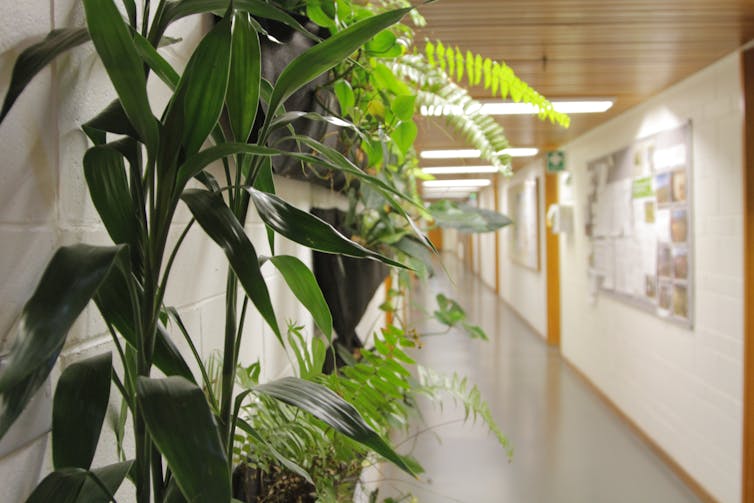
As one person reported:
When I first saw the plants up on the wall brought a smile to my face.
Whenever I walk down the stairs or walk past I mostly always feel compelled to look at the plants on the wall. Not with any anxiety or negative thoughts, rather, at how pleasant and what a great idea it is.
Looking At Wildlife Photography
Our research also explored whether viewing images, posters or paintings of nature would make a difference.
We photographed the plants from viewpoints similar to those the corridor users experienced. Survey responses from those who only viewed these digital images were almost the same as those who experienced them in real life.
While we can’t say for sure, we can hypothesise that given the importance of vision in modern humans, an image that “looks” like nature might be enough to trigger a biophilic response.
Read more: We know contact with nature makes you feel better. Can virtual contact do the same?
However, physically being in the presence of plants did have some stronger behavioural effects. For example corridor users wanted to linger longer looking at the plants than those who viewed the photographs, and were more likely to want to visit the plants again. Maybe the other senses - touch, smell, even sound - created a stronger biophilic response than just sight alone.
So the good news is if you can’t get to a nursery – or if you have a serious inability to keep plants alive – you can still benefit from looking at photographs of them.
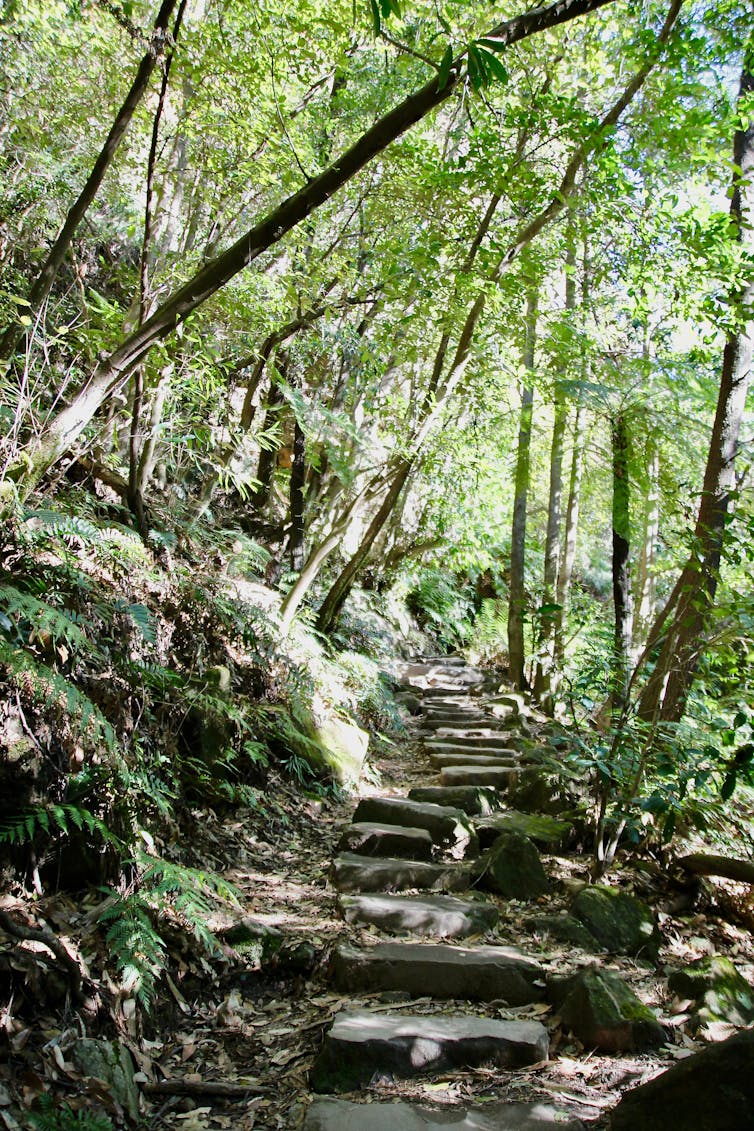
If you haven’t been taking your own photos, search the plethora of images from wildlife photographers such as Doug Gimesy, Frans Lanting and Tanya Stollznow.
Or check out live camera feeds of a wide range of environments, and travel to far-flung places without leaving the safety of home.
While we haven’t tested the mood-boosting effects of live videos, we hypothesise their physiological and psychological effects will be no different than digital photographs.
Here are seven places to help you get started.
The Bush Blitz citizen science app launched a new online tool today. The species recovery program encourages children to explore their backyard to identify different species.
“From the bottom of the sea direct to your screen”: watch this underwater live stream of Victoria’s rocky reef off Port Phillip Bay
The Coastal Watch website offers live camera feeds on beaches around Australia.
Watch the running water, trees and occasional fauna in California’s Redwood Forest River.
In pastoral Australia, go on a four-hour drive through the country side along tree-lined roads.
Zoos Victoria has set up live cameras that show its animals in natural (and nature-like) environments from Melbourne Zoo and Werribee Open Range Zoo.
Yellowstone National Park may be closed right now, but webcams are stationed in various locations throughout the park.
Read more: The science is in: gardening is good for you ![]()
Cris Brack, Associate Professor, Fenner School of Environment and Society, Australian National University and Aini Jasmin Ghazalli, Graduate student
This article is republished from The Conversation under a Creative Commons license. Read the original article.
The government's UNGI scheme: what it is and why Zali Steggall wants it investigated
Laura Schuijers, University of MelbourneIndependent MP and barrister Zali Steggall recently drew public attention to a federal government program that supports gas, hydro and coal power projects through underwriting.
Writing to Auditor General Grant Hehir, Steggall called for an investigation into the “underwriting new generation investment” (UNGI) program, saying it lacks transparency at a time when visibility of public spending is crucial.
Read more: The government's electricity shortlist rightly features pumped hydro (and wrongly includes coal)
“Underwriting” is when a degree of financial risk associated with a project is taken on by the government, rather than the project’s proponent.
Amid an economic crisis and a pressing need to transition to lower-carbon energy, people are understandably interested in where government money is being invested within the energy sector, and on what grounds.
As we face mounting job losses and stranded assets from the transition away from coal – and from the COVID-19 pandemic – taxpayers have a right to anticipate that the government’s investments will be strategically sound.
But the UNGI program lacks the important detail needed to assure the public that smart decisions are being made.
UNGI Explained
The UNGI program was introduced in 2018. It followed the collapse of Malcolm Turnbull’s National Energy Guarantee and an Australian Consumer and Competition Commission (ACCC) inquiry, which found competition in Australia’s electricity sector needs to be stronger to reduce prices.
The federal government describes UNGI as “technology neutral”. This means the government’s focus is on supporting “best and lowest cost” energy generation options to get off the ground – whether coal, gas, or renewables.
What’s unclear is the extent to which a costs analysis under UNGI will consider long-term and indirect costs, such as by using social costing metrics.
A holistic analysis like this is important in the context of the climate crisis, which could set the Australian economy back more than A$762 billion in damages by 2050. Only considering short-term and direct costs is a recipe for long-term damage when it comes to energy and the impacts of climate change.
Read more: It's clear why coal struggles for finance – and the government can't change that
Half the projects currently shortlisted for potential support are fossil fuel projects. The other half are renewables-powered pumped hydrogen projects.
But as Steggall has written, the government hasn’t been transparent about how they decide on which projects to underwrite.
These 12 shortlisted projects were chosen without any final guidelines published informing the public on the selection process. Preliminary criteria, identified in the request for proposals, hasn’t been converted into a decision-making mandate, despite an indication this would happen.
Does The UNGI Program Have Legal Support?
Steggall’s letter to the Auditor General referenced research by the Australia Institute think tank, which has criticised the UNGI program as having no legal foundation.
The institute published advice from barristers Fiona McLeod SC and Lindy Barrett, which outlines hypothetical ways UNGI could proceed. These include via an agreement with states, existing legislation, or new legislation. They concluded that there was no identifiable support mechanism in place at the time of the advice.
More than a year later, there hasn’t been any new legislation. And the government has flagged the Clean Energy Finance Corporation’s Grid Reliability Fund as the existing mechanism to support the UNGI program.
So Why Might That Be A Problem?
There are restrictions on the types of financial instruments this fund can support, as well as on what types of projects. While the Clean Energy Finance Corporation can provide loans, it may not be able to support the types of contracts envisaged by the early UNGI documents.
As the name suggests, the Clean Energy Finance Corporation could not support a coal project. And yet a coal project has been shortlisted.
The Grattan Institute’s energy program director Tony Wood also expressed concern, saying last year that UNGI appeared “quite different” to what the ACCC inquiry called for: a scheme to provide certainty for debt financing and facilitate new entrants into the wholesale market.
Read more: Scott Morrison's gas transition plan is a dangerous road to nowhere
And the CEFC is apparently not on the same page as the government that has designated its role in supporting the UNGI program, either. Although it welcomed the funding, CEO Ian Learmonth noted there was no investment mandate, and the Grid Reliability Fund was separate to UNGI.
No Transparency
Steggall and the Australia Institute’s main concerns voiced over the past couple of days seem spurred by an unwillingness or inability of the government to provide information around how UNGI is proceeding.
Transcripts from parliament both last year and earlier this month reveal a number of important questions into the program are repeatedly bookmarked.
Still, several of the shortlisted projects, particularly the gas projects, have been promised support. This includes two already the subject of preliminary agreements and one that’s all but guaranteed funding through an agreement with the NSW government. This suggests the government is ploughing ahead with UNGI despite the lack of clear process or identifiable support mechanism.
Do We Really Need To Support More Gas?
Energy Minister Angus Taylor has noted growth in gas supply could emerge from natural competitiveness flowed from the effects of COVID-19.
Whether we need to underwrite more gas at this stage is questionable, given the oft-touted role of gas as a transition fuel is not clear-cut. And in any case gas will not have long-term viability in a net-zero emissions context.
Post-COVID-19 recovery stimulus must be focused on markets, industries and technologies that need support, but which also, as Steggall puts it, “have a future”.
Read more: 5 big environment stories you probably missed while you've been watching coronavirus
Yes, competitive pricing is important, as is reliable energy supply. But how that’s achieved must not frustrate the ability to address climate change, or compound current economic concerns by locking in future costs.
At the very least, clearer information about how projects are meeting the “best and lowest cost” criteria, and what financial and legal mechanisms are supporting UNGI as it proceeds, is what we require – and deserve.![]()
Laura Schuijers, Research Fellow in Environmental Law, University of Melbourne
This article is republished from The Conversation under a Creative Commons license. Read the original article.
Cutting ‘green tape’ may be good politicking, but it’s bad policy. Here are 5 examples of regulation failure
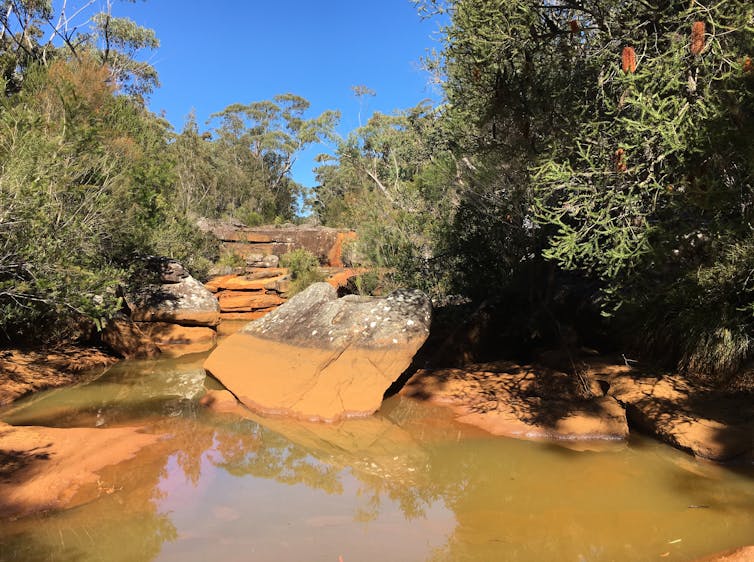
Debate about how Australia will emerge from the coronavirus pandemic is heating up. As part of the economic recovery, business groups have renewed calls to cut “green tape” – environmental regulation that new projects, such as new mines, must follow.
In response, federal environment minister Sussan Ley wants to introduce new legislation to cut green tape and speed up project approvals.
Read more: When it comes to climate change, Australia's mining giants are an accessory to the crime
However a major ten-yearly review of the federal government’s key environment legislation is not due to be finished until October.
Cutting green tape is a long-held aim of the Morrison government, which claims excessive environmental regulation unfairly stifles businesses.
But this isn’t the case. In my 30 years of experience researching water pollution, “green tape” has not translated into effective environmental regulation of industry. In fact, I’m yet to see a coal mining operation that’s effectively regulated after approved through the NSW and federal environmental assessment processes.
Here are five examples that show how existing environmental regulations have done little to prevent pollution and toxic chemicals from entering the environment.
1. Closed Mines Pollute For Decades
My research on water pollution from coal mines in the Sydney basin routinely reveals inadequate environmental regulation. I’ve repeatedly uncovered long-standing environmental issues the industry doesn’t seem to learn from, such as pollution continually leaching from active and closed mines.
Read more: What should we do with Australia's 50,000 abandoned mines?
As part of my PhD research in 2002/3, I studied Canyon Colliery – a coal mine deep in the Blue Mountains that closed in 1997. The mine constantly releases large volumes of toxic zinc and nickel contaminated water from the flooded underground workings into an otherwise pristine mountain stream.
This caused ecological damage in the Grose River, including a steep reduction in species and numbers of river invertebrates below the entry of the mine wastes into the river.
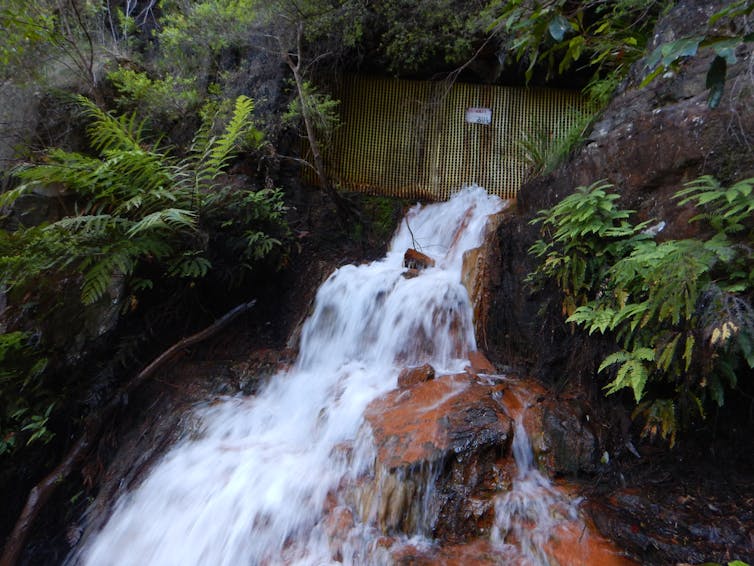
It’s now 23 years since the mining stopped, but the pollution continues – testimony of weak and ineffective environmental regulation. And it will probably last for centuries.
The Canyon Mine is just one of thousands of contaminated, derelict mining and industrial sites dotted around Australia lacking environmental controls.
2. Wollangambe River
Environmental regulation has become more stringent in the last 25 years thanks to legislation introduced by the Howard government in 1999, and NSW’s Protection of the Environment Operations Act introduced in 1997.
But despite this legislation, many new and active mines that lead to environmental damage have been assessed and approved.
Research by my team at Western Sydney University has documented pollution from an active Blue Mountains coal mine, Clarence Colliery.
The mine caused severe metal contamination and ecological damage to the Wollangambe, a World Heritage River. Our research led to the NSW Environment Protection Authority (EPA) in 2017 imposing more effective restrictions on the release of toxic pollutants from the mine.
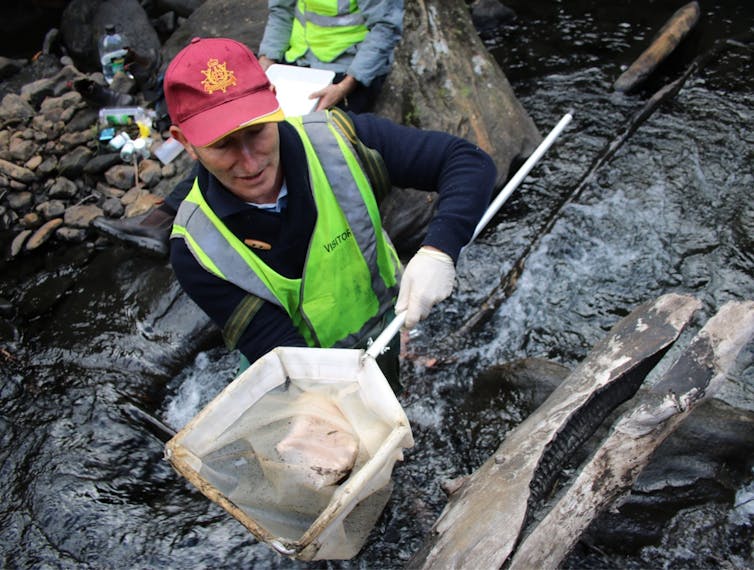
Despite approvals from both the NSW and federal governments, it seemed no one had noticed the magnitude of pollution from poorly treated mine wastes until our research was conducted. This caused ecological degradation to more than 20 kilometres of the highly “protected” Wollangambe River.
The Conversation contacted Centennial Coal, which owns Clarence Colliery, for comment. They directed us to their statements in 2017, when the EPA finished a five-year review of Clarence’s Environmental Protection Licence (EPL). Then, the company said:
As a result of this review Clarence will operate under a new EPL which will include agreed reductions in metal concentration limits for all water discharged to the Wollangambe. Salinity targets will also be set at 100 EC (electrical conductivity).
Clarence will also be required to comply with a Pollution Reduction Programme (PRP), also issued by the EPA, which will result in Centennial formalising options to address all water quality issues and to meet specific water quality milestones.
3. Georges River
In 2010 I made a submission as part of the environmental assessment for an extension of BHP Billiton’s Bulli Seam coal mining operations (now owned by South 32).
This involved reading thousands of pages of consultant reports explaining how the expanded operation would attempt to avoid or minimise impacts to the environment.
The mine extension was approved. Despite the many “green tape” hurdles, the approved mine was allowed to discharge wastes which our research discovered contained pollutants that were hazardous to river life in the Georges River. These included salt, nickel, zinc, aluminium and arsenic polluting the upper Georges River.
Environmental groups took the coal mine owner to court in 2012, and I provided my evidence for the court case to the NSW EPA.
The EPA has since worked with the coal miner to reduce pollution from the mine.
4. Coal Mining Under Sydney’s Water Supply
Many were stunned on March 16 this year, when the NSW government signed off on new coal mine “longwalls” directly under Woronora Reservoir, part of Sydney’s drinking water supply.
Longwall mining is the continuous mechanical removal of coal in underground mines that allows the roof of the mine to cave in after the coal is removed.
So what can they do to a river? Redbank Creek near Picton – 65 kilometres southwest of Sydney – provides a sad testimony.
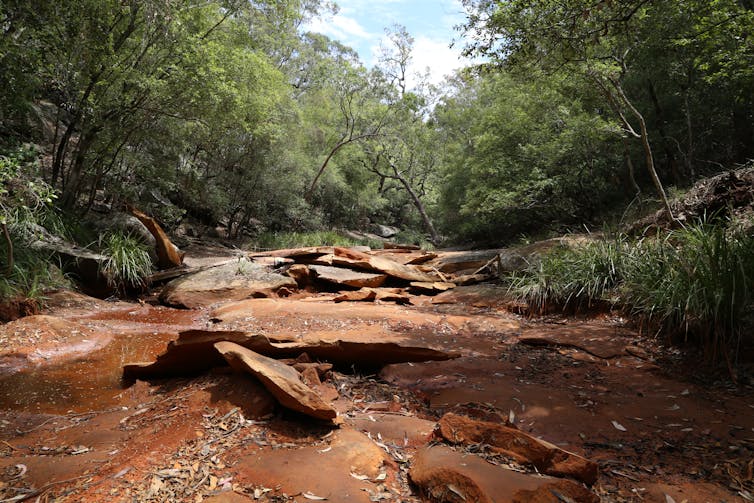
For nearly a decade, I documented damage where falling ground levels (subsidence) caused by longwalls led to extensive damage to the creek channel.
The land surface fell more than one meter. This caused cracking, warping and buckling of the creek channel. It now rarely holds water in many stretches. Isolated stagnant pools in the creek now accumulate saline and metal-contaminated water containing little aquatic life except for mosquitoes.
The mine responsible for this damage, Tahmoor Colliery, is seeking to extend its operations and the NSW government is currently considering the development.
This mine also disposes of about four to eight megalitres of poorly treated wastes each day to the Bargo River, a popular freshwater swimming river for south-western Sydney.
5. PFAS Contamination
Despite the existence of “green tape”, unforeseen problems have left Australia with many contaminated sites that may never be fully cleaned up.
We’ve seen this in the dozens of locations across Australia where toxic PFAS chemicals have contaminated land, water, ecosystems and people.
Read more: A blanket ban on toxic 'forever chemicals' is good for people and animals
These were previously regarded as safe chemical additives, for example in fire fighting foam, particularly at military bases.
Such contamination is very expensive to remediate and in February this year landholders near three defence bases reached a financial settlement for the PFAS damage to their property.
“Green tape” is an emotive word implying unnecessary and slow environmental regulation that delays major projects.
Given my own direct experience involved poorly regulated coal mines, I shudder to imagine the environmental degradation “fast-tracked” environmental regulation will lead to.
The Conversation also contacted SIMEC, which owns Tahmoor Colliery. A spokesperson said:
Mining in NSW is governed by stringent state and federal laws enforced by a number of government departments and regulators. SIMEC Mining acquired the Tahmoor Coking Coal Mine two years ago and takes its environmental, compliance and social responsibilities seriously.
Tahmoor Mine has been operating for well over 40 years. We acknowledge that historical mine activity did impact Redbank Creek and that this was self-reported to the regulator. Since then, SIMEC has worked closely with the NSW Department of Planning, Industry and Environment (DPIE) to enact a comprehensive plan to rehabilitate the creek. Recent rainfall has demonstrated the success of this work and we are confident that the rehabilitation works will restore the creek.
While our operations do produce water as part of the mining process, this is treated and monitored in accordance with our licence conditions. The quality of this water is mandated by our environment protection licence issued and monitored by the NSW Environmental Protection Authority (EPA). Typically, the water monitoring results are well below those limits allowed by the licence. To further improve water quality, SIMEC Mining has committed to the installation of a new water treatment plant.
Water management has been a key focus for SIMEC in the planning of the proposed Tahmoor South extension. We have commissioned extensive specialist assessments to understand any potential impact on ground and surface water. If our extension is approved, these water assets will be carefully monitored throughout the life of the mine to ensure that should any issue occur, it is detected early and resolved efficiently.
Ian Wright, Senior Lecturer in Environmental Science, Western Sydney University
This article is republished from The Conversation under a Creative Commons license. Read the original article.
Snowy 2.0 threatens to pollute our rivers and wipe out native fish
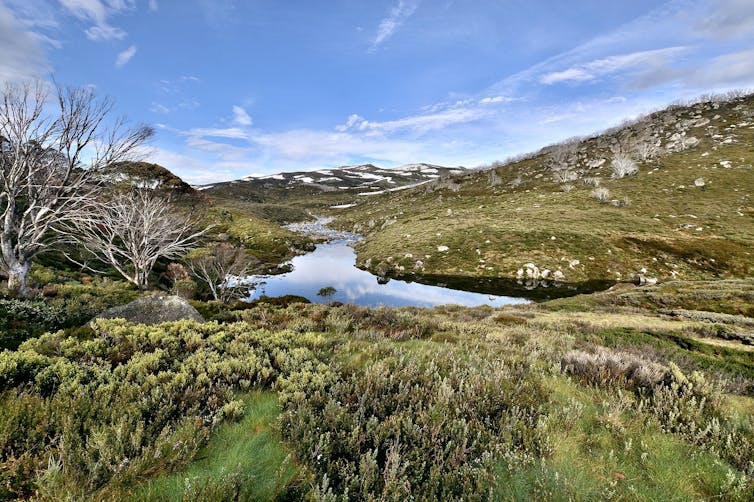
The federal government’s Snowy 2.0 energy venture is controversial for many reasons, but one has largely escaped public attention. The project threatens to devastate aquatic life by introducing predators and polluting important rivers. It may even push one fish species to extinction.
The environmental impact statement for the taxpayer-funded project is almost 10,000 pages long. Yet it fails to resolve critical problems, and in one case seeks legal exemptions to enable Snowy 2.0 to wreak environmental damage.
The New South Wales government is soon expected to grant the project environmental approval. This process should be suspended, and independent experts should urgently review the project’s environmental credentials.
Native Fish Extinctions
Snowy Hydro Limited, a Commonwealth-owned corporation, is behind the Snowy 2.0 project in the Kosciuszko National Park in southern NSW. It involves building a giant tunnel to connect two water storages – the Tantangara and Talbingo reservoirs. By extension, the project will also connect the rivers and creeks connected to these reservoirs.
A small, critically endangered native fish, the stocky galaxias, lives in a creek upstream of Tantangara. This is the last known population of the species.
Read more: Snowy 2.0 is a wolf in sheep's clothing – it will push carbon emissions up, not down
An invasive native fish, the climbing galaxias, lives in the Talbingo reservoir (it was introduced from coastal streams when the original Snowy project was built). Water pumped from Talbingo will likely transfer this fish to Tantangara.
From here, the climbing galaxias’ capacity to climb wet vertical surfaces would enable it to reach upstream creeks and compete for food with, and prey on, stocky galaxias – probably pushing it into extinction.
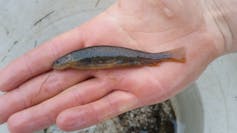
Snowy Hydro has applied for an exemption under NSW biosecurity legislation to permit the transfer of the climbing galaxias and two other fish species: the alien, noxious redfin perch and eastern gambusia.
Redfin perch compete for food with other species and produce many offspring. They are voracious, carnivorous predators, known to prey on smaller fish.
Redfin perch also allow the establishment of a fatal fish disease – epizootic haematopoietic necrosis virus – or EHN. This disease kills the endangered native Macquarie perch, the population of which below Tantangara is one of very few remaining.
If Snowy 2.0 is granted approval, it is likely to spread these problematic species through the headwaters of the Murrumbidgee, Snowy and Murray rivers.
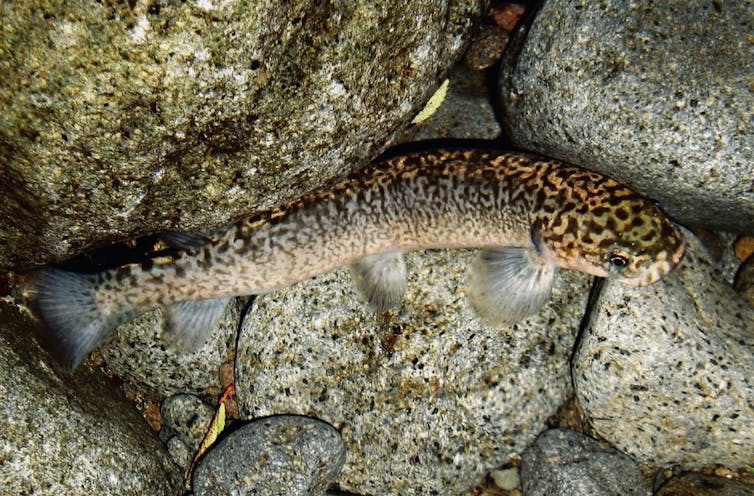
Acid And Asbestos Pollution
Four million tonnes of rock excavated to build Snowy 2.0 would be dumped into the two reservoirs. Snowy Hydro has not assessed the pollution risks this creates. The rock will contain potential acid-forming minerals and a form of asbestos, which threaten to pollute water storages and rivers downstream.
When the first stage of the Snowy Hydro project was built, comparable rocks were dumped in the Tooma River catchment. Research in 2006 suggested the dump was associated with eradication of almost all fish from the Tooma River downstream after rainfall.
Read more: Snowy 2.0 will not produce nearly as much electricity as claimed. We must hit the pause button
Addressing The Problems
The environmental impact statement either ignores, or pays inadequate attention to, these environmental problems.
For example, installing large-scale screens at water inlets would be the best way to prevent fish transfer from Talbingo Dam, but Snowy Hydro has dismissed it as too costly.
Snowy Hydro instead proposes a dubious second-rate measure: screens to filter pumped flows leaving Tantangara reservoir, and building a barrier in the stream below the stocky galaxias habitat.
The best and cheapest way to prevent damage from alien species is stopping the populations from establishing. Trying to control or eradicate pest species once they’re established is far more difficult and costly.
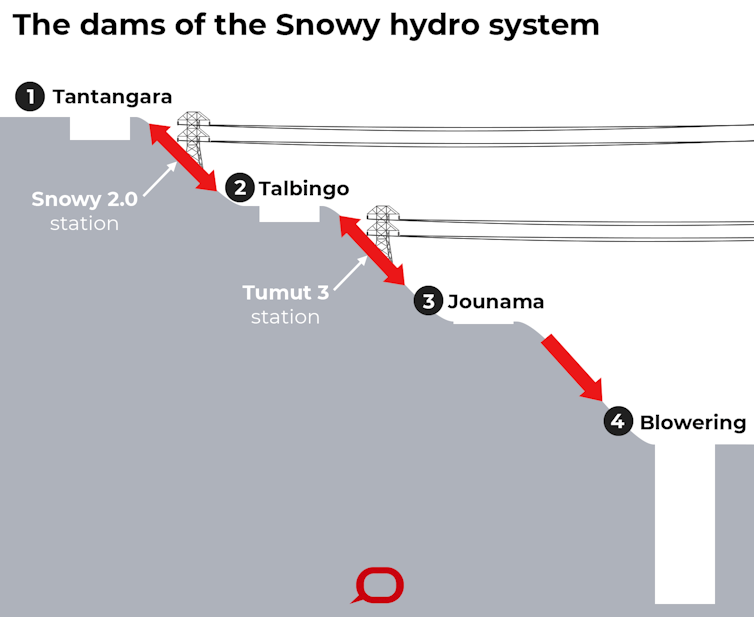
We believe the measures proposed by Snowy Hydro are impractical. It would be very difficult to maintain a screen fine and large enough to prevent fish eggs and larvae moving out of Tantangara reservoir and such screens would be totally ineffective at preventing the spread of EHN virus.
A six metre-high waterfall downstream of the stocky galaxias habitat currently protects the critically endangered species from other invasive species threats. But climbing galaxias have an extraordinary ability to ascend wet surfaces. They would easily climb the waterfall, and possibly the proposed creek barrier as well.
Such an engineered barrier has never been constructed in Australia. We are informed that in New Zealand, the barriers have not been fully effective and often require design adjustments.
Read more: The government's electricity shortlist rightly features pumped hydro (and wrongly includes coal)
Even if the barrier protected the stocky galaxias at this location, efforts to establish populations in other unprotected regional streams would be severely hampered by the spread of climbing galaxias.
Preventing redfin and EHN from entering the Murrumbidgee River downstream of Tantangara depends on the reservoir never spilling. The reservoir has spilled twice since construction in the 1960s, and would operate at much higher water levels when Snowy 2.0 was operating. Despite this, Snowy Hydro says it has “high confidence in being able to avoid spill”.
If dumped spoil pollutes the two reservoirs and Murrumbidgee and Tumut rivers, this would also have potentially profound ecological impacts. These have not been critically assessed, nor effective prevention methods identified.
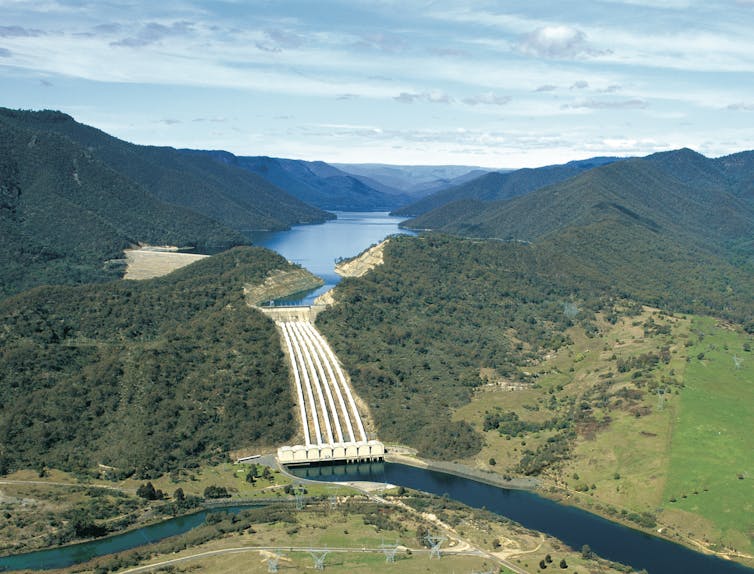
Looking To The Future
Snowy 2.0 will likely make one critically endangered species extinct and threaten an important remaining population of another, as well as pollute freshwater habitats. As others have noted, the project is also questionable on other environmental and economic grounds.
These potential failures underscore the need to immediately halt Snowy 2.0, and subject it to independent expert scrutiny.
In response to the issues raised in this article, a spokesperson for Snowy Hydro said:
“Snowy Hydro’s EIS, supported by numerous reports from independent scientific experts, extensively address potential water quality and fish transfer impacts and the risk mitigation measures to be put in place. As the EIS is currently being assessed by the NSW Government we have no further comment.”
A previous version of this article incorrectly stated that water pumped from Tantangara will likely transfer fish to Talbingo. It should have said water pumped from Talbingo will likely transfer fish to Tantangara.![]()
John Harris, Adjunct Associate Professor, Centre for Ecosystem Science, UNSW and Mark Lintermans, Associate professor, University of Canberra
This article is republished from The Conversation under a Creative Commons license. Read the original article.
Using lots of plastic packaging during the coronavirus crisis? You're not alone
Daiane Scaraboto, University of Melbourne; Alison M Joubert, The University of Queensland, and Claudia Gonzalez-Arcos, The University of QueenslandIn eight years, US environmentalist and social media star Lauren Singer had never sent an item of rubbish to landfill. But last month, in an impassioned post to her 383,000 Instagram followers, she admitted the reality of COVID-19 has changed that.
I sacrificed my values and bought items in plastic. Lots of it, and plastic that I know isn’t recyclable in NYC (New York City) recycling or maybe even anywhere … why would I go against something that I have actively prioritised and promoted?
Singer wrote that as the seriousness of COVID-19 dawned, she stocked up on items she’d need if confined to her home for a long period – much of it packaged in plastic.
Her confession encapsulates how the pandemic has challenged those of us who are trying to reduce our waste. Many sustainability-conscious people may now find themselves with cupboards stocked with plastic bottles of hand sanitiser, disposable wipes and takeaway food containers.
So let’s look at why this is happening, and what to do about it.
Sustainability Out The Window
We research how consumers respond to change, such as why consumers largely resisted single-use plastic bag bans. Recently we’ve explored how the coronavirus has changed the use of plastic bags, containers and other disposable products.
Amid understandable concern over health and hygiene during the pandemic, the problem of disposable plastics has taken a back seat.
For example, Coles’ home delivery service is delivering items in plastic bags (albeit reusable ones) and many coffee shops have banned reusable mugs, including global Starbucks branches.
Read more: For decades, scientists puzzled over the plastic 'missing' from our oceans – but now it's been found
Restaurants and other food businesses can now only offer home delivery or takeaway options. Many won’t allow customers to bring their own containers, defaulting to disposables which generate plastic waste. This means many consumers can’t reduce their plastic waste, even if they wanted to.
Demand for products such as disposable wipes, cleaning agents, hand sanitiser, disposable gloves and masks is at a record high. Unfortunately, they’re also being thrown out in unprecedented volumes.
And the imperative to prevent the spread of coronavirus means tonnes of medical waste is being generated. For example, hospitals and aged care facilities have been advised to double-bag clinical waste from COVID-19 patients. While this is a necessary measure, it adds to the plastic waste problem.
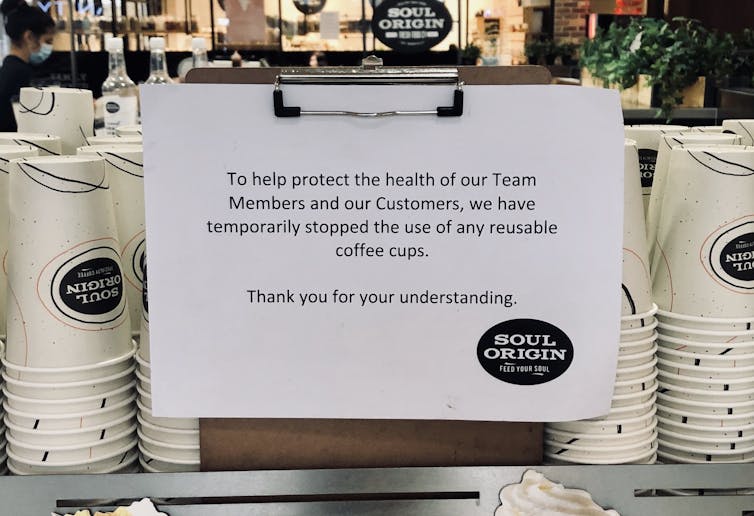
Cause For Hope
Sustainability and recycling efforts are continuing. Soft plastics recycler Red Cycle is still operating. However many dropoff points for soft plastics, such as schools and council buildings, are closed, and some supermarkets have removed their dropoff bins.
Boomerang Alliance’s Plastic Free Places program has launched a guide for cafes and restaurants during COVID-19. It shows how to avoid single-use plastics, and what compostable packaging alternatives are available.
As the guide notes, “next year the coronavirus will hopefully be a thing of the past but plastic pollution won’t be. It’s important that we don’t increase plastic waste and litter in the meantime.”
Old Habits Die Hard
In the US, lobbyists for the plastic industry have taken advantage of health fears by arguing single-use plastic bags are a more hygienic option than reusable ones. Plastic bag bans have since been rolled back in the US and elsewhere.
However, there is little evidence to show plastic bags are a safer option, and at least reusable cloth bags can be washed.
A relaxation on plastic bag bans – even if temporary – is likely to have long-term consequences for consumer behaviour. Research shows one of the biggest challenges in promoting sustainable behaviours is to break old habits and adopt new ones. Once people return to using plastic bags, the practice becomes normalised again.
In Europe, the plastic industry is using the threat of coronavirus contamination to push back against a ban on single-use plastics such as food containers and cutlery.
Such reframing of plastic as a “protective” health material can divert attention from its dangers to the environment. Prior research, as well as our preliminary findings, suggest these meanings matter when it comes to encouraging environmentally friendly behaviours.
Read more: Stop shaming and start empowering: advertisers must rethink their plastic waste message
Many people are using their time at home to clear out items they no longer need. However, most second-hand and charity shops are closed, so items that might have had a second life end up in landfill.
Similarly, many tool, book and toy libraries are closed, meaning some people will be buying items they might otherwise have borrowed.
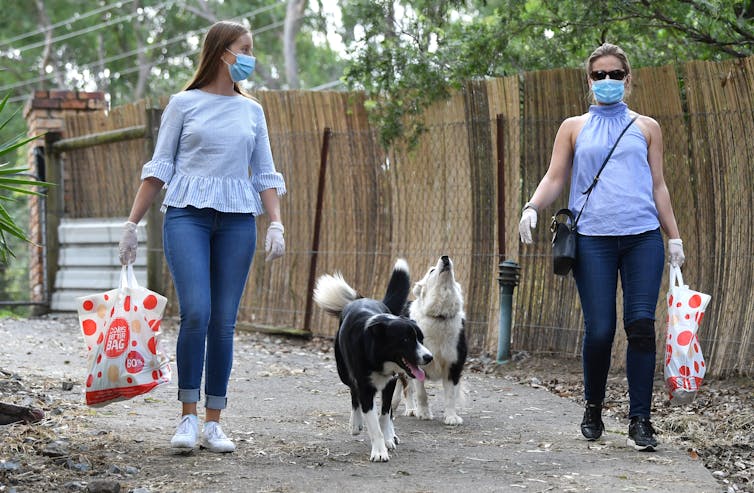
What To Do
We can expect the environmental cause will return to the foreground when the COVID-19 crisis has passed. In the meantime, reuse what you have, and try to store rather than throw out items for donation or recycling.
Talk to takeaway food outlets about options for using your own containers, and refuse disposable cutlery or napkins with deliveries. Use the time to upskill your coffee-making at home rather than buying it in a takeaway cup. And look for grocery suppliers offering more sustainable delivery packaging, such as cardboard boxes or biodegradable bags.
Above all, be vigilant about ways environmental protections such as plastic bag bans might be undermined during the pandemic, and voice your concerns to politicians.
Read more: We organised a conference for 570 people without using plastic. Here's how it went ![]()
Daiane Scaraboto, Associate Professor of Marketing, University of Melbourne; Alison M Joubert, Lecturer in Marketing, The University of Queensland, and Claudia Gonzalez-Arcos, Lecturer in Marketing, The University of Queensland
This article is republished from The Conversation under a Creative Commons license. Read the original article.
Here are 5 ways to flatten the climate change curve while stuck at home

After the horrors of the last bushfire season, climate action in Australia seemed to have new momentum. But then coronavirus struck. All of a sudden, the public was preoccupied by a different catastrophe.
But one positive has emerged from the devastation wrought by coronavirus: our ability to radically shift social and economic systems when needed. It shows real action on climate change is possible, and should encourage us to work towards that even as we stay at home.
Read more: From the bushfires to coronavirus, our old 'normal' is gone forever. So what's next?
I must note here that for some people right now, the focus is on simply surviving. Increased domestic violence risk, housing insecurity, unemployment, mental health issues and other forms of marginalisation means many have little energy for activism.
But for those of us with time and resources to spare, there’s plenty to do now to support climate action. My research focuses on how people around the world use digital technologies to create change. So here are five ways to make a difference without necessarily leaving the house.

1. Create Or Join Local Coronavirus Support Networks
A huge number of community mutual aid groups have recently formed - try joining one.
Mutual aid is about helping each other and realising that we all have something to offer. Participating can do more than help us get through the pandemic – it can also strengthen the community ties we need to cooperate on climate action.
Read more: The community-led movement creating hope in the time of coronavirus
The lack of effective climate leadership by many governments - including the Australian government - means working for change at the local level is vital. The Transition Towns movement, which began in 2006, is built on the idea that community resilience can create new possibilities in times of crisis.
Recently, Extinction Rebellion UK released the Alone Together resource pack, to help people meet the challenges of coronavirus through compassion, creativity and mutual aid.
Working together can shift our ideas about what is possible, so keep talking to your neighbours once the pandemic has passed.
2. Put Pressure On Government And Industry To Take Action
Climate change advocacy campaigns are achieving significant successes in Australia and there are plenty of ways you can contribute from home.
For example, the federal Environment Protection and Biodiversity Conservation Act is currently under review, and public input is being sought. This legislation has not done a great job of protecting the environment since it was enacted 20 years ago, and the effects of climate change mean strong environment laws have never been more needed.
If you want to make a submission and need ideas, Friends of the Earth have outlined how the laws must change. Or just write about what matters to you when it comes to protecting the environment.
Now might be also a good time to check whether any of your money is invested in fossil fuels, and move it if it is: Market Forces will walk you through the process.
You could also give time or money to support organisations working for climate justice, such as Seed Mob or the Climate Justice Union.
3. Keep Learning
The pandemic has highlighted problems with our political and economic systems. The crisis has affected everyone, but in different ways. Racial disparities put some groups at increased risk and there are claims that policing of the lockdown is harsher in some areas than others.
Also, people in low-paid work such as childcare and retail are at additional risk of exposure to the virus, while many in better-paid professions can work from home.
Learning from the disparities we see during this crisis can help us build a broader and more inclusive environmental movement. If you have time to read, consider books about Indigenous connection to land, such as Bruce Pascoe’s Dark Emu, Victor Steffensen’s Fire Country, and Robin Wall Kimmerer’s Braiding Sweetgrass.
4. Use Time At Home To Reconsider Your Lifestyle
Making changes as individuals will not in itself solve climate change. The impact of driving less and skipping an international trip pales in comparison to the effect of, say, Adani’s proposed Carmichael coal mine.
But you can link the changes you make at home to broader structural change.
For example, if you’re using time at home to evaluate your water use, find out which industries near you use the most water - and whether there’s a fair distribution. How much are households paying compared to mines, for example, and do any restrictions that your household faces also apply to industries that use a lot of water?
If you’ve shifted to getting groceries delivered, learn more about how to support regenerative agriculture in your area. Can you buy fruit and vegetables from farms that are improving soil health, supporting biodiversity, and paying workers fairly?

5. Reconnect With Nature
Connection with nature can be soothing. It can also help to spark and sustain environmental action. Connecting to nature might mean growing your own food, paying attention to city plants and wildlife on your walk to the grocery store, or simply letting the breeze blow through your apartment.
Together While We’re Apart
Finding ways to participate in climate action from home can connect us to our communities, and help us find meaning and agency during a difficult time.
One day this crisis will pass, and we might find we’ve laid the groundwork to come out of it stronger, and with more hope than before.
Read more: Here's what the coronavirus pandemic can teach us about tackling climate change ![]()
Sky Croeser, Lecturer, School of Media, Creative Arts and Social Inquiry, Curtin University
This article is republished from The Conversation under a Creative Commons license. Read the original article.
Birding At Home In Pittwater
Thank you to everyone for staying at home as much as possible to stop the spread of the virus and save lives. We know self-isolation can be challenging and stressful at times so what we need right now is nature.
We can be so grateful that no matter where you live, you can still see birds and take comfort from them.
Please visit their new Birding at Home page to find out how you and your household can continue to enjoy the beauty of our feathered friends.
You'll find activities to occupy kids while our movements are restricted, links to our Autumn Birds in Backyards survey and Bird Finder, and information on how you can act to protect birds forever.
To help everyone who is now Birding at Home, they are also kicking off a regular live series on Facebook where our bird experts will be taking questions and talking about what we love best - birds.
Even if you are an expert birder, we encourage you to join in for a chat – and please spread the word to all the bird and nature lovers in your life.
P.S. They'll be having new bird experts every week to talk about a new topic, including Amanda Lilleyman in the NT on shorebirds and Holly Parsons to talk about bird friendly gardens. Make sure you have liked them on Facebook to get notifications and join in the talks.
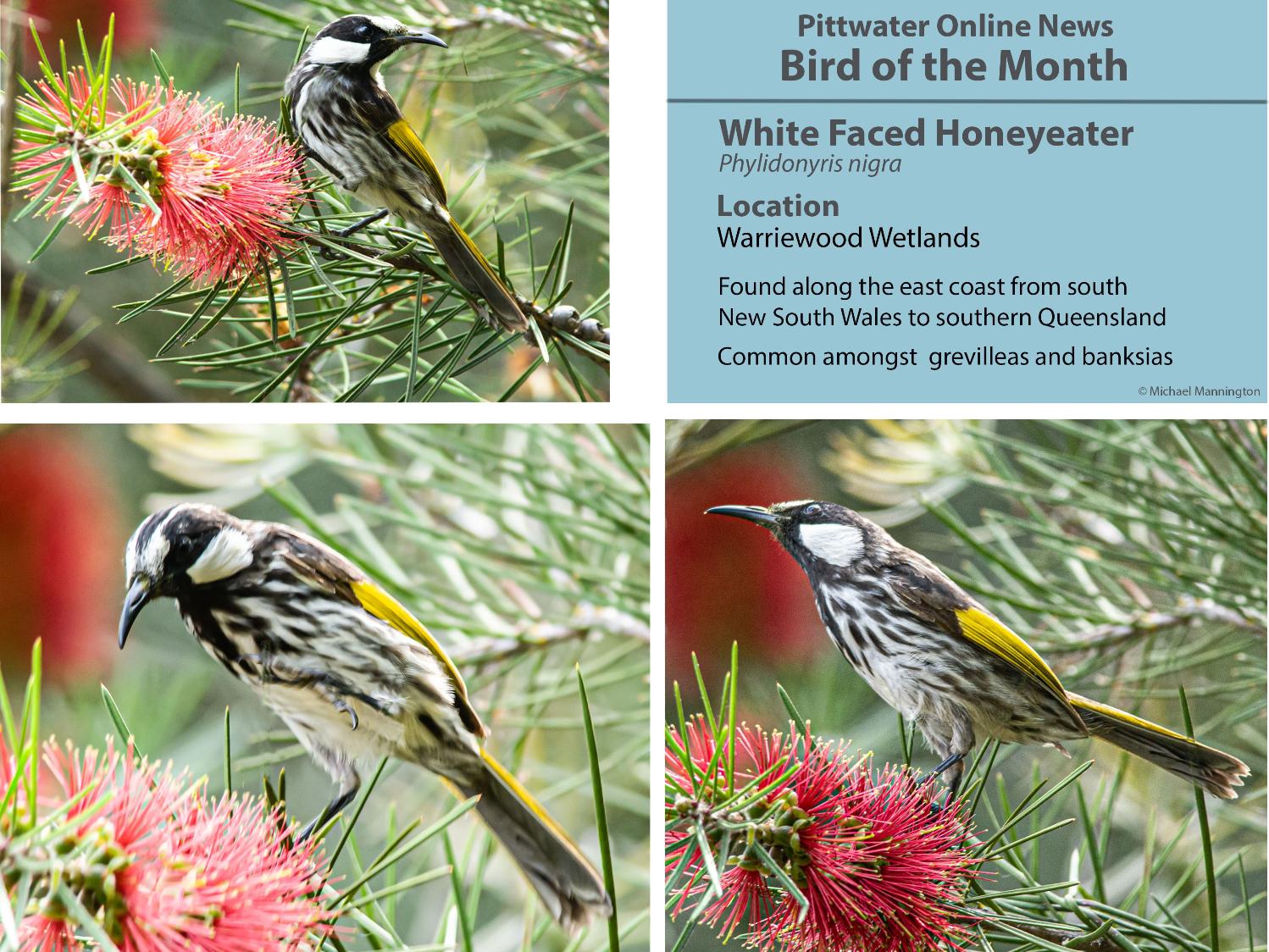
Weed Cassia Now Flowering: Please Pull Out And Save Our Bush
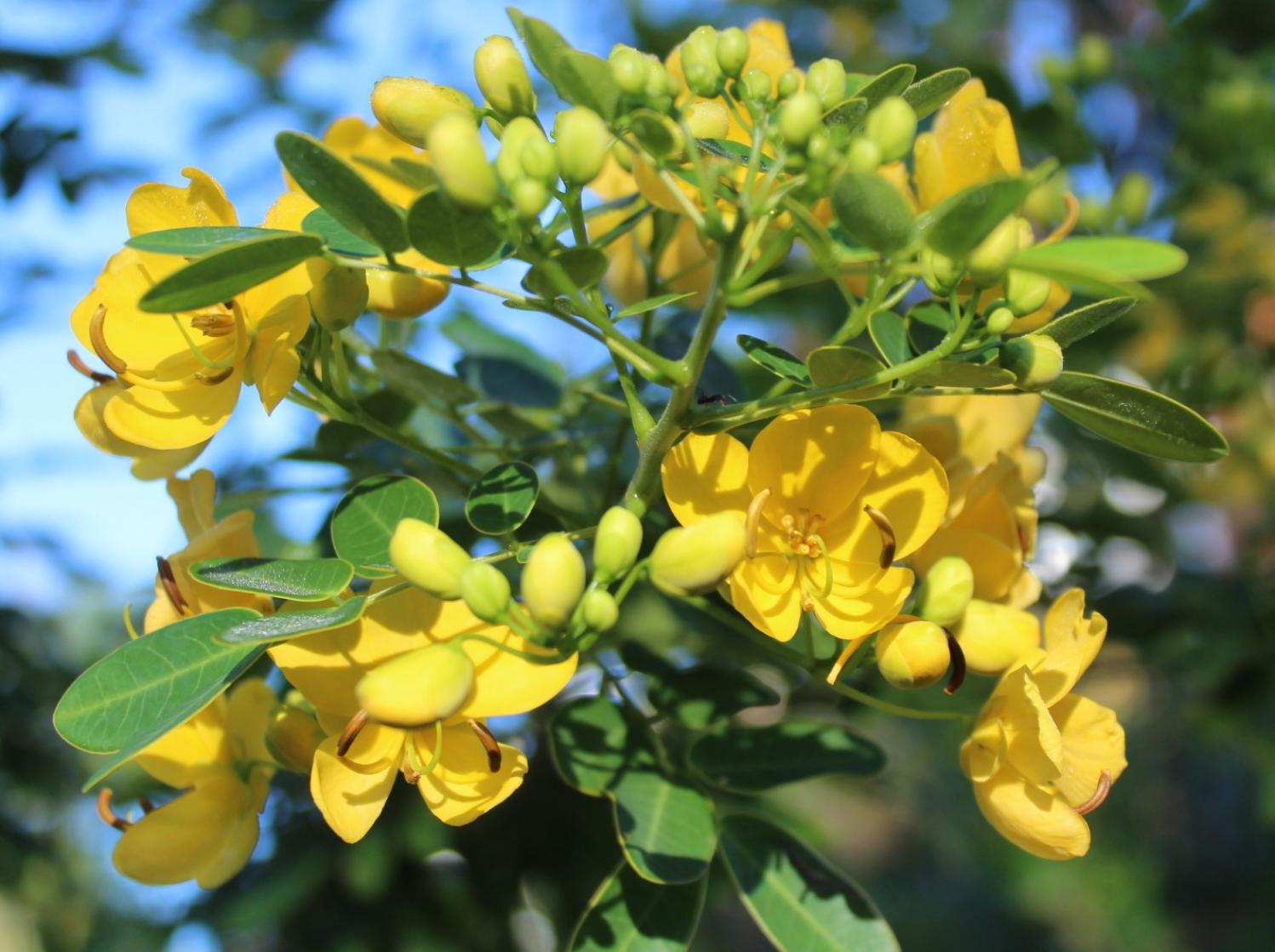
Please Help Sydney Wildlife Rescue: Donate Your Cans And Bottles And Nominate SW As Recipient
You can Help Sydney Wildlife help Wildlife. Sydney Wildlife Rescue is now listed as a charity partner on the return and earn machines in these locations:
- Pittwater RSL Mona Vale
- Northern Beaches Indoor Sports Centre NBISC Warriewood
- Woolworths Balgowlah
- Belrose Super centre
- Coles Manly Vale
- Westfield Warringah Mall
- Strathfield Council Carpark
- Paddy's Markets Flemington Homebush West
- Woolworths Homebush West
- Caltex Concord road Concord West
- Bondi Campbell pde behind Beach Pavilion
- Westfield Bondi Junction car park level 2 eastern end Woolworths side under ramp
- UNSW Kensington
- Enviro Pak McEvoy street Alexandria.
Every bottle, can, or eligible container that is returned could be 10c donated to Sydney Wildlife.
Every item returned will make a difference by removing these items from landfill and raising funds for our 100% volunteer wildlife carers. All funds raised go to support wildlife.
It is easy to DONATE, just feed the items into the machine select DONATE and choose Sydney Wildlife Rescue.
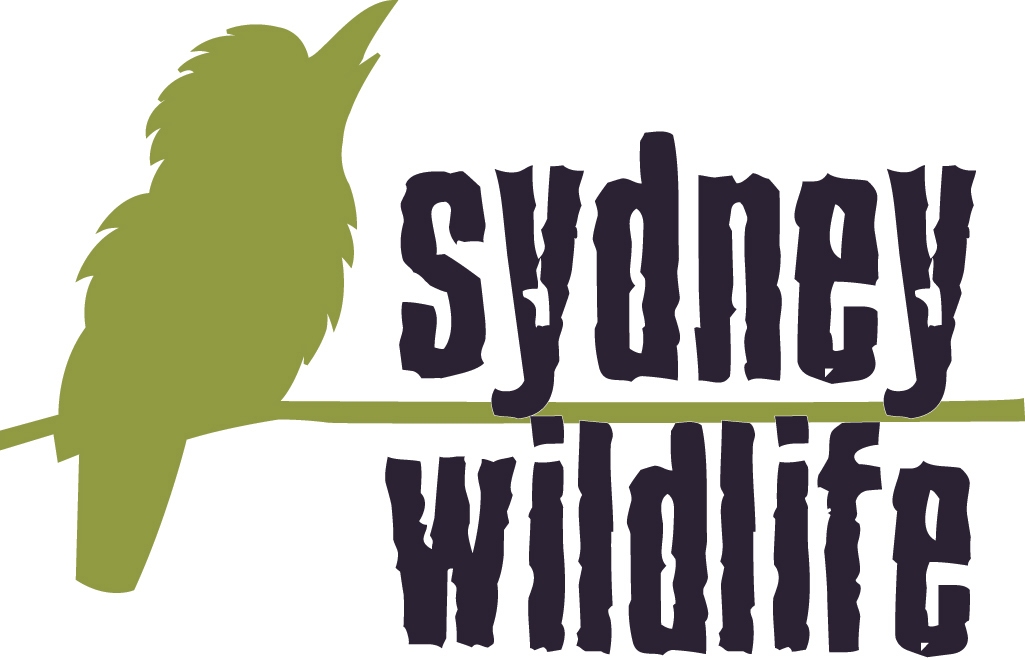
Bushcare In Pittwater
Where we work Which day What time
Avalon
Angophora Reserve 3rd Sunday 8:30 - 11:30am
Avalon Dunes 1st Sunday 8:30 - 11:30am
Avalon Golf Course 2nd Wednesday 3 - 5:30pm
Careel Creek 4th Saturday 8:30 - 11:30am
Toongari Reserve 3rd Saturday 9 - 12noon (8 - 11am in summer)
Bangalley Headland 2nd Sunday 9 to 12noon
Bayview
Winnererremy Bay 4th Sunday 9 to 12noon
Bilgola
North Bilgola Beach 3rd Monday 9 - 12noon
Algona Reserve 1st Saturday 9 - 12noon
Plateau Park 1st Friday 8:30 - 11:30am
Church Point
Browns Bay Reserve 1st Tuesday 9 - 12noon
McCarrs Creek Reserve Contact Bushcare Officer To be confirmed
Clareville
Old Wharf Reserve 3rd Saturday 8 - 11am
Elanora
Kundibah Reserve 4th Sunday 8:30 - 11:30am
 Mona Vale
Mona Vale Mona Vale Beach Basin 1st Saturday 8 - 11am
Mona Vale Dunes 2nd Saturday +3rd Thursday 8:30 - 11:30am
Newport
Bungan Beach 4th Sunday 9 - 12noon
Crescent Reserve 3rd Sunday 9 - 12noon
North Newport Beach 4th Saturday 8:30 - 11:30am
Porter Reserve 2nd Saturday 8 - 11am
North Narrabeen
Irrawong Reserve 2nd Saturday 2 - 5pm
Palm Beach
North Palm Beach Dunes 3rd Saturday 9 - 12noon
Scotland Island
Catherine Park 2nd Sunday 10 - 12:30pm
Elizabeth Park 1st Saturday 9 - 12noon
Pathilda Reserve 3rd Saturday 9 - 12noon
Warriewood
Warriewood Wetlands 1st Sunday 8:30 - 11:30am
Whale Beach
Norma Park 1st Friday 9 - 12noon
Western Foreshores
Coopers Point, Elvina Bay 2nd Sunday 10 - 1pm
Rocky Point, Elvina Bay 1st Monday 9 - 12noon
Gardens And Environment Groups And Organisations In Pittwater
Pittwater Reserves
Aussie Bread Tags Collection Points

Launching – Backyard Species Discovery – A Virtual Citizen Science Bush Blitz
How Does It Work?
About
- 1635 new fauna species
- 41 new plant species
- 33 new lichen species
- 4 new fungi species
If You Can Read This Headline, You Can Read A Novel. Here’s How To Ignore Your Phone And Just Do It
by Judith Seaboyer, Senior Lecturer, The University of Queensland
Public anxiety about the capacity of digital-age children and young adults to read anything longer than a screen grab has come to feel like moral panic. But there is plenty of evidence to suggest we must take such unease seriously.
In 2016, the US National Endowment for the Arts reported the proportion of American adults who read at least one novel in 2015 had dropped to 43.1% from 56.9% in 1982.
In 2018, a US academic reported that in 1980, 60% of 18-year-old school students read a book, newspaper or magazine every day that wasn’t assigned for school. By 2016, the number had plummeted to 16%.
Those same 12th graders reported spending “six hours a day texting, on social media and online”.
American literacy expert and neuroscientist Maryanne Wolf describes the threat screen reading poses to our capacity for “the slower cognitive processes such as critical thinking, personal reflection, imagination, and empathy that are all part of deep reading”.
She asks:
Will the mix of continuously stimulating distractions of children’s attention and immediate access to multiple sources of information give young readers less incentive either to build their own storehouses of knowledge or to think critically for themselves?
But rather than taking up defensive positions on either side of the digital-analogue reading divide, Wolf encourages us to embrace both. As parents and teachers we can help our children develop a bi-literate reading brain. There are several ways we can do this.
Reading pathways
Reading is a learned skill that requires the development of particular neural networks. And different reading platforms encourage the development of different aspects of those networks.
Screen-reading children, immersed from toddlerhood in the pleasures and instant gratification of skimming, clicking and linking, develop cognitive skills that make them adept power browsers, good at the useful ability to scan for information and analyse data.
But Wolf suggests this kind of reading “can short-circuit the development of the slower, more cognitively demanding comprehension processes that go into the formation of deep reading and deep thinking.”
Unless the cognitive skills required for deep reading are similarly developed and nurtured, new generations of readers – distracted by the ready availability of digital information – may not learn to venture beyond the shallows of the reading experience.
Along with others concerned with early childhood education Wolf advises encouraging paper literacy from infancy. She doesn’t recommend forbidding devices. Instead we should regularly turn them off and make the time and space to read books on paper with children.
We can model our own reading practices by setting aside our own smart phones to lose ourselves in a book.
But how can secondary and tertiary teachers help inexperienced readers? The problem is likely to be aliteracy, meaning students can read but they choose not to because they don’t see it to be important for learning. And because they haven’t read much, it’s hard work. The problem can seem intractable. But it can be done.
Turn off the phone and read
My first venture into helping tertiary students read better was a 2011-2013 cross-university government-funded project that set out to foster what we termed “reading resilience”. We found if students were persuaded to prioritise reading as they did a test or an essay, they would invest the time to get into the zone that is the other world of the text.
We complemented complex texts with a guide that encouraged students to think critically as they read and to keep going when the language seemed impenetrable, the narrative incomprehensible (or dull) and the length endless. Or when the siren call of the smart phone became irresistible.
They experimented with switching off their devices for blocks of two hours while they simply read. And they did read.
Students prioritised this difficult work because we rewarded pre-class reading with marks. Some classes uploaded one-page, carefully argued responses; others answered complex feedback-rich quizzes.
I surveyed a large first-year introduction to literary studies at the University of Queensland in 2013 before testing a version of the same “reading resilience” course in 2014. The rise in reading rates was exponential.
The number of students who completed all ten primary texts (including the poem Beowulf and Toni Morrison’s Beloved) more than tripled, and the number who completed the ten accompanying secondary texts (selected chapters from an introduction to literary theory and criticism) went up by more than six times.
Reported student satisfaction for this course from 2008 to 2012 had ranged between 64% and 75%. Once reading resilience was introduced, many complained about the reading load yet the level of overall satisfaction jumped to 86%.
We can all do it
It’s not just readers raised in a digital-age who have difficulty with long-form text. Have you have lost the skill of deep reading? Are you finding it increasingly difficult to stay with, say, a literary novel? You are not alone.
Wolf, who despite having two degrees in literature, confesses to the shocking discovery that recently she found herself struggling to stick with a beloved Herman Hesse novel.
We too can switch off our devices and set aside a space and time to revitalise the neural pathways that once made us immersive readers.
As Wolf argues, the skills of “deep reading” that involve “slower, more time-consuming cognitive processes […] are vital for contemplative life”. Deep readers are likely to be more thoughtful members of the community at a time when good citizenship may never have been more important.
This article was published first in The Conversation, click here to read the original - republished under a Creative Commons licence.
Vale Robert May, the legendary scientist who helped us understand ecosystems, chaos theory and even pandemics

Lord Robert “Bob” May, Baron May of Oxford, who has died aged 84, was one of the greatest Australian scientists of the past century.
He was awarded virtually every honour the British establishment could offer: a professorship at Oxford, the presidency of the Royal Society of London, a knighthood, a seat in the House of Lords, a role as chief scientific advisor to the UK government, and membership of the Order of Merit, a personal gift of the Queen restricted to only 24 living members.
Nevertheless, he remained a quintessential Australian, with a strong Australian accent and larrikin streak – he claimed to be the first person in the 350-year history of the Royal Society to get a swearword into its minutes.
Read more: Robert Hooke: The 'English Leonardo' who was a 17th-century scientific superstar
May was born in Sydney in 1936 and originally trained as a physicist, becoming professor of theoretical physics at the University of Sydney in 1969. But in 1973 he shifted both continents and disciplines, becoming a professor of zoology at Princeton University, before moving to Oxford in 1988.
He brought the mathematical insights of a physicist to the then largely descriptive field of ecology, transforming it into a theoretical science with a firm mathematical basis. Nevertheless, he recognised the complexity of ecology in comparison with physics. I recall him saying “ecology is not rocket science – it’s much harder than that”.
His legacy is particularly important in the current crisis. The basic reproductive number of a disease, R0, is a statistical concept that permeates much of the discussion on how to manage the coronavirus pandemic. If we can reduce it to below one and maintain it there, we can eliminate the disease.
With his long-term collaborator, Professor Roy Anderson from Imperial College, May brought this concept to the management of infectious diseases more than 40 years ago. This distillation of a complex ecological process into a simple mathematical concept was typical of his scientific insight.
Read more: 6 countries, 6 curves: how nations that moved fast against COVID-19 avoided disaster
May made many other major contributions to ecology. One of his earliest insights, which remains crucially important today, is that complex ecosystems are not necessarily more resilient than simple ones.
Ecologists had assumed that diverse and complex ecosystems such as coral reefs and tropical rainforests were better able to resist disturbance. But May’s mathematical models showed this was not the case. As we enter an era of unprecedented human impact on the natural world, we would do well to remember this key insight.
May was also one of the leaders in developing chaos theory, showing that simple ecological systems can show extraordinarily complex and unpredictable behaviour.
More recently, he brought his ecologist’s perspective to bear on another type of complex, dynamic system, by analysing the behaviour of financial markets.
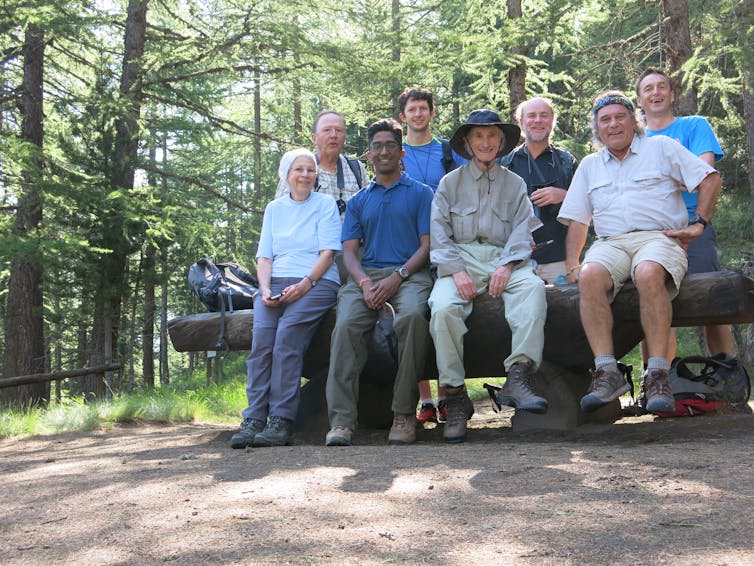
Although he was in no way a field ecologist, he had a longstanding enthusiasm for nature. Until the final few years of his life, he organised annual walking trips to the European Alps with his ecological colleagues. Fit and wiry, not to mention intensely competitive, he was a hard man to beat to the top of a mountain.
Compared with his huge success in the UK, May remains comparatively unknown in his native Australia. However, he did receive our highest honour, a Companion of the Order of Australia, in 1998.
As the world grapples with the coronavirus pandemic, using the modelling methods he had a hand in developing, we should remember and appreciate his world-class contributions to science.![]()
Hamish McCallum, Professor, Griffith School of Environment and Acting Dean of Research, Griffith Sciences, Griffith University
This article is republished from The Conversation under a Creative Commons license. Read the original article.
Probably Tomfoolery
U.K. Performance Artist Tomos Roberts is sharing some great spoken word (poems) creations via videos in current weeks, some of them being seen and shared millions of times within hours of being released. Working under the handle of 'Probably Tomfoolery' he is giving many a reason to smile and expressing what so many are saying - universal-consciousness-wise!
Worth checking out if you haven't seen his stuff yet - below is the latest video but more is available via: https://www.probablytomfoolery.com/ - which shares links to his other platforms.
Monowai’s Captain Recalls Forty Years Of City's Progress
Published April 30, 2020 by NFSA
From the Film Australia Collection. Made by the Commonwealth Film Unit 1959. Directed by Loch Townsend. Forty years of Sydney’s progress as seen by the captain of the ship Monowai.
Armchair Antarctica | The Voyage South
Heroes Help NSW School Students Stay Connected
May 1, 2020
Prominent Australians have donated their time to help students kick start their day while learning at home.
Prominent Australians, including musician Guy Sebastian and TV foodies Matt Preston, Gary Mehigan and Manu Feildel, as well as the Department of Education’s Eddie Woo, have donated their time to help students kick start their day while learning at home.
Department of Education Secretary, Mark Scott, today announced a series of 15-minute wellbeing classes to be live-streamed at the start of each school day until May 8.
“School resumes on Wednesday for Term 2, and most students in NSW will continue their learning from home for the next few weeks,” Mr Scott said.
“We’re encouraging parents to follow the staged return to school so that we can manage face-to-face teaching with appropriate safeguards. During this time of unprecedented change, it is important our children still have the routine of schoolwork and learning from home to maintain a sense of normalcy.”
NSW Education LIVE will connect students with expert presenters across the fields of music, art, food, gardening, technology, and sport.
Mr Scott said the series also features other high-profile identities including the host of Gardening Australia Costa Georgiadis, artist Ben Quilty, Google Australia Managing Director Mel Silva, Rugby League hero Alan Tongue, and Sydney Swans player Ollie Florent.
“Our live streams are a unique and exciting way to support parents, students and teachers with additional resources to help with learning from home,” Mr Scott said.
As a father of two primary school-aged boys, Guy Sebastian said he understood the challenges of this period of self-isolation and was excited to be involved in NSW Education LIVE.
“I was keen to be involved with these live streams to do what I could to help kids stay positive and happy through this, while also giving them the mental wellbeing to stay focused on their learning,” Mr Sebastian said.
NSW Education LIVE will be streamed direct to the 2200-plus public school websites and the 1400-plus school Facebook pages for students to access at home. Students will also be able to watch a broadcast on-demand after each episode streams.
Mathematics teacher Eddie Woo said this unprecedented situation has given us all an opportunity to connect and learn with people all over the country.
“To everyone who’s trying their best to support their children as they engage with learning at home, I’m delighted to be part of Education LIVE and hope that lots of people can tune in to join us!” Mr Woo said.
You can follow the conversation on social media using the hashtags #EducationLIVE and #learnfromhome.
Curious Kids: why can't people hear in their sleep?

I am wondering why people can’t hear when they are asleep? – Joanna
This is a fantastic question, Joanna!
During sleep, our body can decide to ignore sounds, movements and smells happening around us which might otherwise wake us.
This decision-making mostly happens in our brain.

Although our ears continue to work as usual, our brain acts as a filter and decides whether we should respond to the sound and wake up or continue sleeping.
Read more: Curious Kids: why don't people fall out of bed when they are sleeping?
If we wake up, then we can form a memory of having heard the sound, but if we don’t wake up then it’s as though we didn’t hear anything.
This is an extraordinary tool as it protects our sleep so we don’t wake up to everything happening while we sleep.
But it also doesn’t completely shut us off from the outside world which would be terrible for our survival.
Our Brain Responds To Loud Sounds
Louder sounds are more likely to wake us up than quieter sounds.
For example, a loud bang from someone dropping something in the middle of the night is likely to startle and wake us.
But we’ll probably sleep through the sound of a mosquito quietly buzzing nearby.

The Type Of Sound Matters Too
Sounds that are either unusual or important to us are also more likely to wake us.
Our brain interprets unusual sounds as a threat and alerts us to that danger. This allows us to decide if we need to protect ourselves or run away if necessary.
Just imagine how useful and protective this would have been for our ancestors who likely slept in the wild surrounded by dangerous predators, such as lions and tigers!
Read more: Curious Kids: What happens in our bodies when we sleep?
Luckily, we don’t have to worry about sabre-toothed cats anymore, but it’s still useful to be aware of loud bangs or strange noises while we sleep so we or parents can respond.
Our brain is also more likely to wake us to sounds it considers important like our name.

We will more readily wake when our name is called compared to someone else’s name being called out.
What About Depth Of Sleep?
When we sleep we go through cycles consisting of light and deep stages of sleep.
We have about five to six sleep cycles each night, depending on how long we sleep.
During light sleep you will be woken more easily than during deep sleep.
Read more: Curious Kids: why are some people affected by sleep paralysis?
We have more deep sleep in the first half of the night and more light sleep in the second half of the night.
This means that the sound of a crowing rooster that instantly woke us at the break of dawn, may have have been ignored by our brains early in our sleep period.
Everyone’s Different
Finally, people have very different sensitivity levels toward sounds.
Background chatter in your house while you are napping might not wake you if you’re not sensitive to noise.
Read more: Curious Kids: Why do we always fall asleep in cars?
However, someone who is very sensitive to noise might find it unbearable to keep sleeping in this noisy environment.
If we are more sensitive to sounds, then our brain is more likely to make the decision to wake us.
Hello, curious kids! Have you got a question you’d like an expert to answer? Ask an adult to send your question to curiouskids@theconversation.edu.au![]()
Gorica Micic, Postdoctoral research fellow, Flinders University and Branko Zajamsek, Research associate, Flinders University
This article is republished from The Conversation under a Creative Commons license. Read the original article.
Anniversary Hopes For A United Future
True Histories Need Both Stories
Tristan Simms, Year 11, Matraville Sports High School
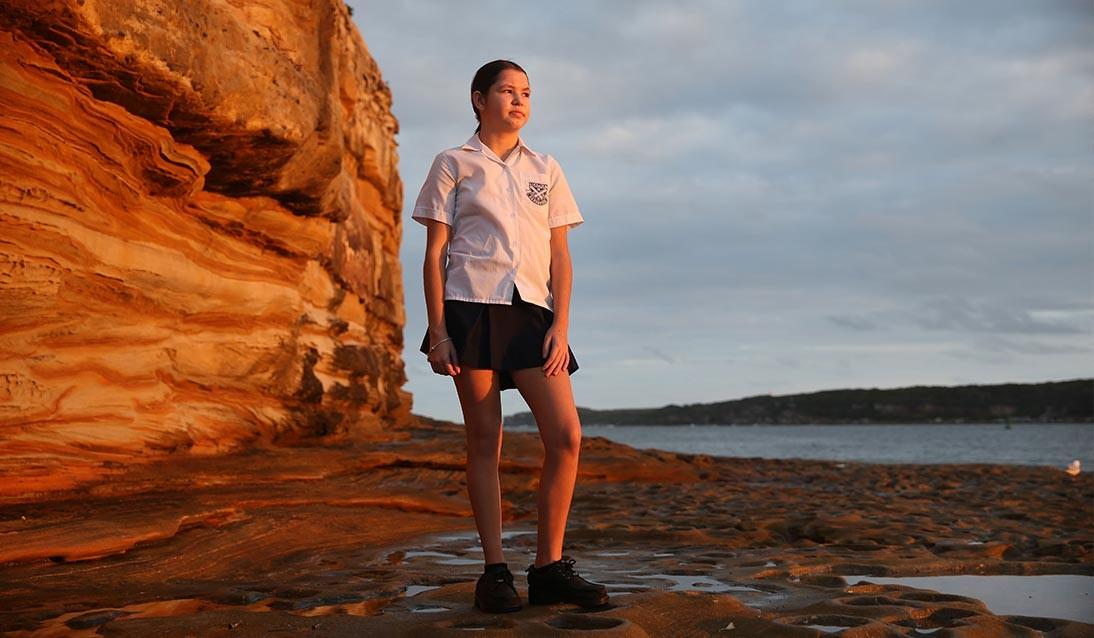
The Stone At The Heart Of Our History
Gus Kohu, Year 11, Cronulla High School
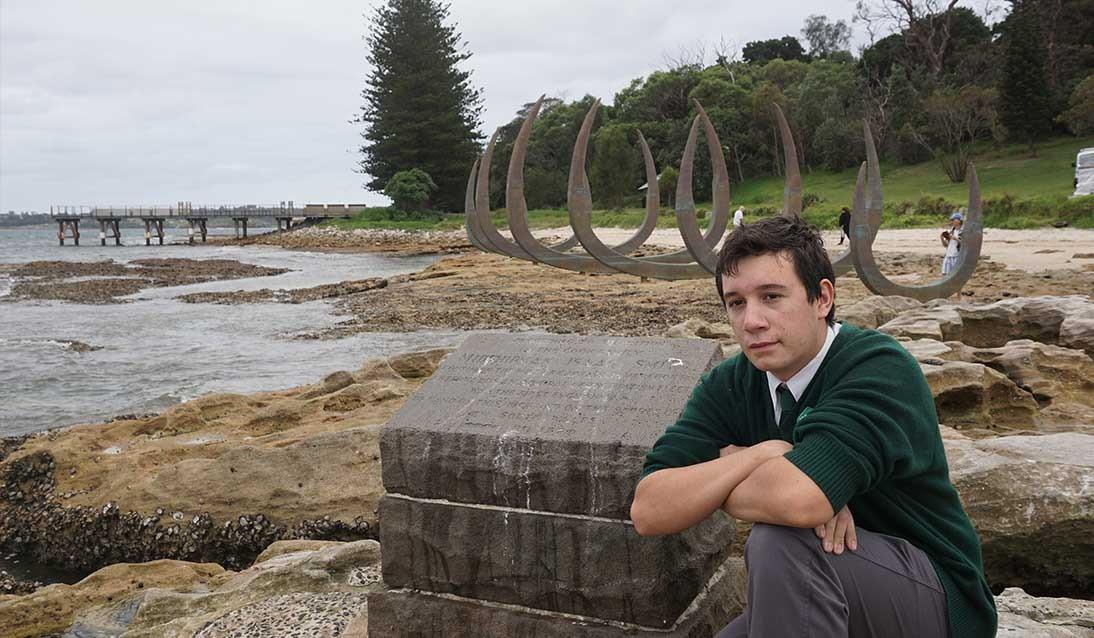
Curious Kids: have people ever seen a colossal squid?
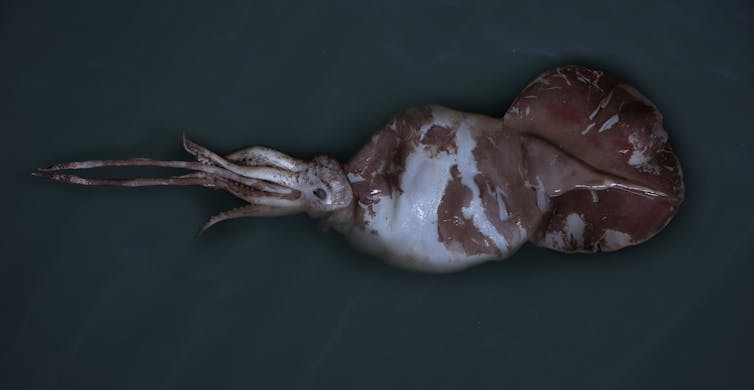
Have people ever seen a colossal squid? – Aubree
The colossal squid (Mesonychoteuthis hamiltoni) is the stuff of nightmares ripped straight out of the mind of a sleeping pirate. Picture the giant kraken wrapped around a ship and dragging it to the bottom of the sea!
People have seen colossal squid, but not very often. Colossal squid live in the Southern Ocean near Antarctica, and it was not until 1981 when the first whole animal was found. It was captured by a trawler near the coast of Antarctica.
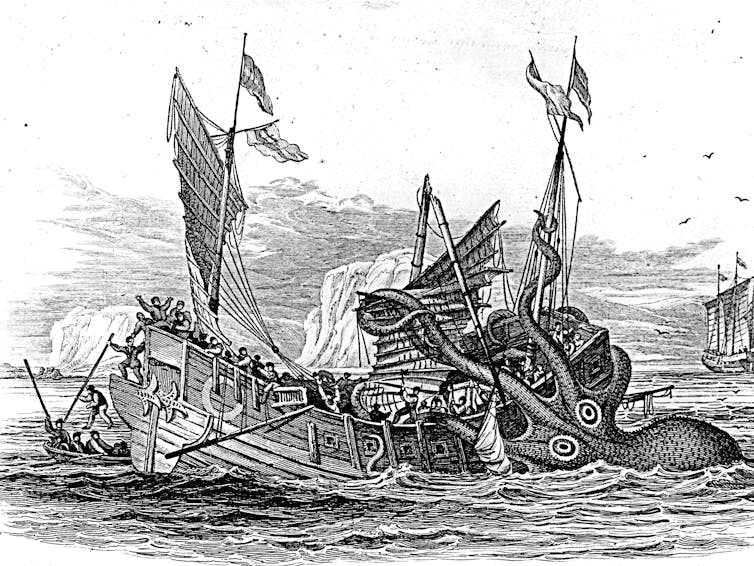
Since then a few more have been captured by fishermen. You can see one today in a New Zealand museum, but they do not preserve well.
Colossal squid are the heaviest squid on the planet (but they’re not actually big enough to sink a pirate ship). The ones that have been found whole weighed nearly 500 kilograms – that’s almost the same as a grand piano.
Read more: Curious Kids: why is the sea salty?
But judging by the size of the squid beaks that have been found in the stomach of sperm whales, they can get a lot bigger. It is estimated they can weigh up to 700kg!
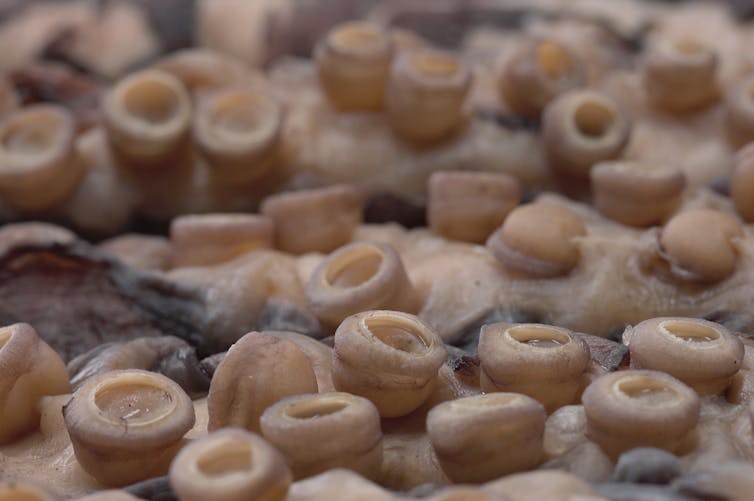
Colossal squid might be heavy, but they may not be the longest squid in the world. They likely grow to around 10 metres long, which is still less than the giant squid, which can grow to more than 12 metres long. The giant squid has a smaller body and really long tentacles, so it doesn’t weigh as much.
They have huge eyes which can be 25 centimetres or more in diameter (as big as a soccer ball). That makes them the biggest animal eyes on the planet. Their eyes have built in headlights that help them see in the dark.
They are set slightly forward-facing so the colossal squid has “binocular vision”. This means it can judge distances when capturing prey. Their tentacles are armed with rotating hooks that allow them to grasp their prey.
Read more: Curious Kids: Do sharks sneeze?
Colossal squid are thought to feed mostly on fish and other squid in the deep parts of the Southern Ocean (more than 1,000 metres deep). At that depth, there is no sunlight and they might use light that can shine from their body (bioluminescence) to lure their prey.
Like all squid, they have a hard beak like a bird, which they use to munch their food. The beak is the only hard part of the squid’s body.
Would such a big animal actually be afraid of anything? Sperm whales are their major predator. It has been estimated that more than 75% of the diet of sperm whales is made up of colossal squid. That is a LOT of calamari!
Many sperm whales have scars on their bodies, caused by epic battles with colossal squid.
Hello, curious kids! Have you got a question you’d like an expert to answer? Ask an adult to send your question to curiouskids@theconversation.edu.au![]()
Culum Brown, Professor, Macquarie University
This article is republished from The Conversation under a Creative Commons license. Read the original article.
Valuable Research - Children’s Shoes Given Tough Test
New Shorebird Identification Booklet
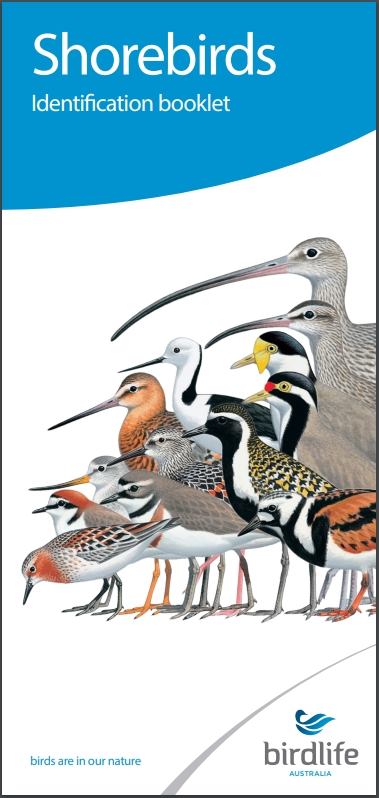 The Migratory Shorebird Program has just released the third edition of its hugely popular Shorebird Identification Booklet. The team has thoroughly revised and updated this pocket-sized companion for all shorebird counters and interested birders, with lots of useful information on our most common shorebirds, key identification features, sighting distribution maps and short articles on some of BirdLife’s shorebird activities.
The Migratory Shorebird Program has just released the third edition of its hugely popular Shorebird Identification Booklet. The team has thoroughly revised and updated this pocket-sized companion for all shorebird counters and interested birders, with lots of useful information on our most common shorebirds, key identification features, sighting distribution maps and short articles on some of BirdLife’s shorebird activities.
The booklet can be downloaded here in PDF file format: http://www.birdlife.org.au/documents/Shorebird_ID_Booklet_V3.pdf
Paper copies can be ordered as well, see http://www.birdlife.org.au/projects/shorebirds-2020/counter-resources for details.
Download BirdLife Australia's children’s education kit to help them learn more about our wading birdlife
Shorebirds are a group of wading birds that can be found feeding on swamps, tidal mudflats, estuaries, beaches and open country. For many people, shorebirds are just those brown birds feeding a long way out on the mud but they are actually a remarkably diverse collection of birds including stilts, sandpipers, snipe, curlews, godwits, plovers and oystercatchers. Each species is superbly adapted to suit its preferred habitat. The Red-necked Stint is as small as a sparrow, with relatively short legs and bill that it pecks food from the surface of the mud with, whereas the Eastern Curlew is over two feet long with a exceptionally long legs and a massively curved beak that it thrusts deep down into the mud to pull out crabs, worms and other creatures hidden below the surface.
Some shorebirds are fairly drab in plumage, especially when they are visiting Australia in their non-breeding season, but when they migrate to their Arctic nesting grounds, they develop a vibrant flush of bright colours to attract a mate. We have 37 types of shorebirds that annually migrate to Australia on some of the most lengthy and arduous journeys in the animal kingdom, but there are also 18 shorebirds that call Australia home all year round.
What all our shorebirds have in common—be they large or small, seasoned traveller or homebody, brightly coloured or in muted tones—is that each species needs adequate safe areas where they can successfully feed and breed.
The National Shorebird Monitoring Program is managed and supported by BirdLife Australia.
This project is supported by Glenelg Hopkins Catchment Management Authority and Hunter Local Land Services through funding from the Australian Government’s National Landcare Program. Funding from Helen Macpherson Smith Trust and Port Phillip Bay Fund is acknowledged.
The National Shorebird Monitoring Program is made possible with the help of over 1,600 volunteers working in coastal and inland habitats all over Australia.
The National Shorebird Monitoring program (started as the Shorebirds 2020 project initiated to re-invigorate monitoring around Australia) is raising awareness of how incredible shorebirds are, and actively engaging the community to participate in gathering information needed to conserve shorebirds.
In the short term, the destruction of tidal ecosystems will need to be stopped, and our program is designed to strengthen the case for protecting these important habitats.
In the long term, there will be a need to mitigate against the likely effects of climate change on a species that travels across the entire range of latitudes where impacts are likely.
The identification and protection of critical areas for shorebirds will need to continue in order to guard against the potential threats associated with habitats in close proximity to nearly half the human population.
Here in Australia, the place where these birds grow up and spend most of their lives, continued monitoring is necessary to inform the best management practice to maintain shorebird populations.
BirdLife Australia believe that we can help secure a brighter future for these remarkable birds by educating stakeholders, gathering information on how and why shorebird populations are changing, and working to grow the community of people who care about shorebirds.
To find out more visit: http://www.birdlife.org.au/projects/shorebirds-2020/shorebirds-2020-program
Glorious Bar-Tailed Godwits Are Here To Go – Sydney
Seniors Synchronise In Workout On The Web: Sessions To Continue
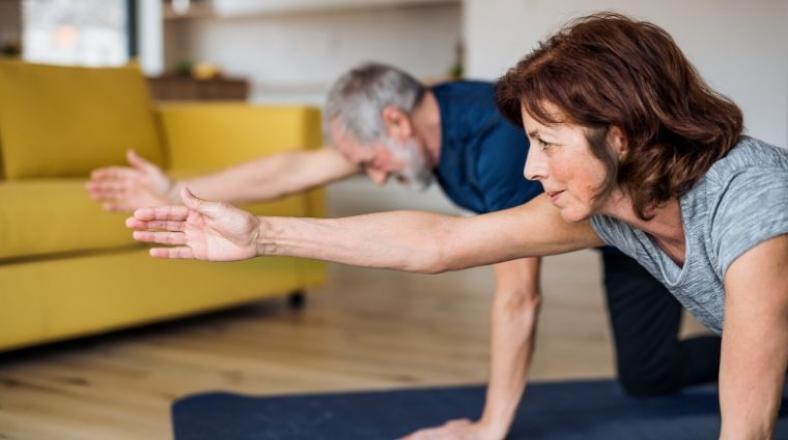
New Tool Measures Quality Of Life In People With Dementia
GEN Aged Care Data: Government Spending On Aged Care
- There was a 27% increase in government spending on aged care services between 2013–14 and 2018–19
- 98% of spending on aged care services comes from the Australian Government
- In 2018–19, governments spent over $20 billion on aged care, with the majority—approximately 66% of this—for residential aged care.
- The expenditure on residential aged care ($13.3 billion) was 2.2 times the amount spent on home care and support ($5.9 billion).
- Government spending on aged care services has increased each year since 2013–14, as is seen in the graph below.
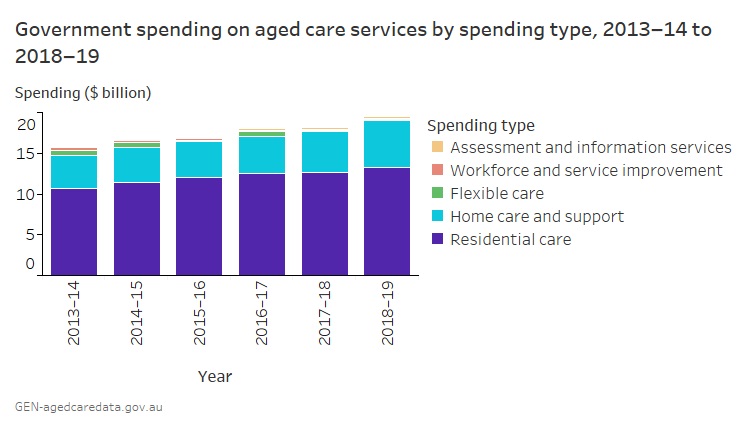
- a 45% increase in spending for home care and home support services, compared with a 24% increase for residential aged care services
- a 73% increase in spending on assessment and information services
- a 53% decrease in spending on workforce and service improvement (noting that this is a small proportion of total spending)
- a 7% increase in spending on flexible care.
- Overall, the rate of spending on aged care services in Australia was highest for residential aged care ($3,198 per older Australian). Government spending on residential aged care was highest in South Australia ($3,597), followed by Victoria ($3,485).
- The Australian Capital Territory had the highest rate of government spending for home care and home support ($1,960 per person in the target population), closely followed by the Northern Territory ($1,888).
- The rate of government spending on flexible care (which includes a specific program for Indigenous Australians) was highest in the Northern Territory ($434 per person).
ESafety Courses To Keep Senior Australians Connected During COVID-19
- Video chatting with family, friends and health professionals;
- Ordering groceries and other shopping essentials online for home delivery;
- Carrying out everyday tasks online, including accessing essential services; and
- Accessing Federal Government information updates from australia.gov.au and the Coronavirus Australia app
GEN Aged Care Data: Services And Places In Aged Care
- Across Australia on 30 June 2019, there were 873 organisations providing residential aged care through 2,717 services. There were 928 organisations providing home care services.
- 1,458 organisations were funded to provide home support during 2018–19 through 3,717 service outlets. Almost three quarters (72%) of Home Support organisations were not-for-profit.
- Residential aged care is delivered across Australia through an allocation of places. The number of places has increased from approximately 184,600 on 30 June 2012 to 213,397 on 30 June 2019.
- Not-for-profit organisations manage more than half of the places in residential aged care (55%).
- From February 2017, government funding for home care is no longer attached to a place in a particular service. This affects some of the time series data for this topic.
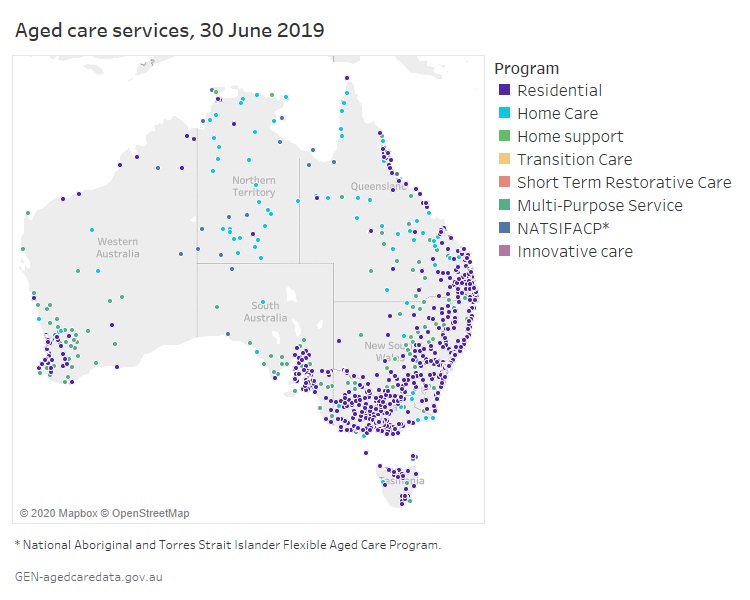
- Residential aged care services are concentrated in more densely populated urban areas, with around 3 in 5 (62%) facilities located in Major cities.
- Transition care services tend to be located near hospitals, so are also based mainly in urban areas (53%).
- Flexible care services focused on particular communities are often located in rural areas—for example, only 1 in 9 (11%) National Aboriginal and Torres Strait Islander Flexible Aged Care Program services are located in cities.
- Residential aged care, which offers long- (permanent) or short-term stays (respite) in an aged care facility
- Home care (Home Care Packages Program), which provides different levels of aged care services for people in their own homes
- Home support (Commonwealth Home Support Programme), which provides entry-level support at home.
- Transition care, which provides short-term care to restore independent living after a hospital stay
- Short-term restorative care, which expands on transition care to include anyone whose capacity to live independently is at risk
- Multi-purpose services, which offer aged care alongside health services in Regional and remote areas
- Innovative Care Programme, which includes a range of programs to support flexible ways of providing care to target population groups
- National Aboriginal and Torres Strait Islander Flexible Aged Care Program, which provides culturally-appropriate aged care at home and in the community.
- There were 873 organisations that operated 2,717 services in residential aged care, with an average occupancy rate of 89% across 2018–19.
- 928 organisations that provided home care services at 30 June 2019.
- In 2018–19, 1,458 organisations were funded to provide home support services.
- There were over 213,400 places in residential aged care at 30 June 2019. The 3 largest states—New South Wales, Victoria and Queensland—collectively accounted for about four-fifths of these places (79%).
- Short-term restorative care was introduced in 2017 with 400 places, which increased to 825 places at 30 June 2019. The transition care program offered 4,060 places at 30 June 2019, with the 3 largest states accounting for just over three-quarters of these places (77%).
- Multi-purpose services delivered care through 3,646 places and the National Aboriginal and Torres Strait Islander Flexible Aged Care Program through 1,072 places. Around 2 in 5 places in this program were operational in the Northern Territory (43%).
- Services run by private organisations are concentrated in major cities
- Rural and remote regions of Australia only have residential services managed by government and not-for-profit organisations.
- On 30 June 2019, 60% of residential aged care services located in Major cities were managed by private organisations. Only 4% of these services in urban areas were managed by government organisations.
- With increasing remoteness, the proportion of residential aged care services managed by private organisations decreases. Government organisations managed over half of the services in Remote and Very remote regions of Australia (52%).
- Not-for-profit organisations managed a significant proportion of all aged care services in all regions of Australia.
- The ratio for residential aged care places varies somewhat between states and territories, from 46 in the Northern Territory to 79 in Victoria and South Australia.
- The National Aboriginal and Torres Strait Islander Flexible Aged Care Program is a prominent part of aged care service provision in the Northern Territory, providing an additional 38 places per 1,000 older people.
- Transition care places have remained at around 4,000 places nationally since 2012. The short-term restorative care program began in 2017 to extend transition care services to anyone needing short-term care to improve their independence (rather than just for people leaving hospital). Since then, there have been 825 places allocated across Australia.
- In residential aged care, places managed by private organisations have seen the most growth. Between 2012 and 2019, private organisations have seen a 34% increase in the number of residential aged care places that they are funded to deliver. Government-managed residential aged care places have decreased by 22% over the same period. Residential aged care places managed by not-for-profit organisations have seen a smaller increase of 9%.
- More than half (56%) of places operated by private organisations were in a service that offered 101 or more places, compared with 42% of places managed by not-for-profit organisations and 11% of places managed by government organisations.
- Only 0.04% of places managed by private organisations, and less than 1% of places operated by not-for-profit organisations, were in the smallest facilities (20 or fewer places). In contrast, 13% of places operated by government organisations were in these smaller services.
- Places per 1,000 of the target population were distributed across Primary Health Networks (PHN) broadly in line with the target ratio (79.6 for all aged care places).
- Government-managed residential aged care places are particularly concentrated in Victoria (outside of Melbourne) and rural or regional areas of New South Wales and Queensland. Residential places managed by not-for-profit organisations are more prominent in the South-Eastern corner of Australia.
Alcohol, Tobacco & Other Drugs In Australia
Older People
- In 2016, 57% of daily smokers were aged 40 and over, up from 44% in 2001.
- Illicit drug use among people aged 50 and over appears to be more prominent in 2016 (22%) than in 2001 (11%).
- The majority of daily smokers in 2016 consisted of people aged 40 and over (57% compared with 43% for people under 40).
- Tobacco is the leading risk factor for the burden of disease among people aged 65–84.
- Females in their 50s (13%) and males between 55–64 (28.8%) were the most likely age cohorts to exceed lifetime risk guidelines by consuming on average more than 2 standard drinks per day.
- People in their 60s were most likely to exceed the single occasion risky drinking guidelines on at least 5 days per week (7.0% in 2016 up from 5.7% in 2013).
- Recent use of any illicit drug has nearly doubled among males in their 50s (from 8.1% to 15.0% in 2016) and males aged 60 and over (from 4.0% to 7.9%), between 2001 and 2016.
- There has been an increase in drug-induced deaths among older people since 1999.
Box OLDER1: How do we define ‘old’?Most population data define ‘old’ as persons aged 65 and over to align with the qualifying age for the Age pension. However, this section will generally refer to people aged 50 and over in order to capture people who may be ageing prematurely due to alcohol and other drug use, and to include the ‘Baby Boomer’ cohort (AIHW 2016). The different older age cohorts are specified where relevant.
- In 2001, daily smokers were more likely to be aged under 40 than aged 40 and over (56% compared with 44%). But as these cohorts have aged over time and as more young people are not taking up smoking, the majority of daily smokers in 2016 consisted of people aged 40 and over (57% compared with 43% for people under 40) (Table S3.24).
- In 2016, people in their 50s (109 cigarettes), 60s (117 cigarettes) and over 70 (111 cigarettes) smoked a greater number of cigarettes per week on average, than younger people aged 14–19 (58 cigarettes) and 20–29 (70 cigarettes) (Table S3.25).
- In 2016, over one-third (37%) of daily smokers were smoking a pack-a-day. This was highest among smokers in their 50s with almost 1 in 2 (48%) smoking 20 or more cigarettes per day (Table S3.26).
- In 2016, 1 in 3 (33%) daily smokers and 1 in 4 (26%) occasional smokers were not planning to quit smoking (Table S3.27)—and these intentions were highest among smokers aged 70 and over (49%) (Table S3.28).
- Among those older smokers who do not plan to quit, the main reason was because they enjoy smoking (ranging from 52% for those aged 40–49 to 69% for those aged 70 and over not planning to quit) (Table S3.29).
- Between 2013 and 2016, people aged 60–69 experienced a significant decline in daily drinking from 12.3% to 10.2%, while for most other age groups there were slight but insignificant declines (Table S3.32).
- Those aged 70 and over continue to be the age group most likely to drink daily, for both males (19.5%) and females (8.7%) (AIHW 2017) (Table S3.33).
- Among females, those aged in their 50s (13.0%) are now the most likely to drink at levels that exceed the National Health and Medical Research Council (NHMRC) lifetime risk guidelines by drinking on average more than 2 standard drinks per day. This age cohort has replaced females aged 18–24 (12.8%) who were previously the most likely to drink at risky levels.
- Among males, those aged 55–64 (28.8%) were the most likely age cohort to drink at levels exceeding guidelines for lifetime risk (AIHW 2017). This is consistent with data from the National Health Survey (Table S2.27).
- People aged 70 and over were the least likely to exceed the NHMRC single occasion risk guidelines, with only 1 in 10 (11.0%) consuming more than 4 standard drinks on a single occasion in the past year (Figure OLDER1). This is consistent with data from the National Health Survey (ABS 2018).
- However, people in their 60s were most likely to exceed this guideline on at least 5 days per week (7.0% in 2016 up from 5.7% in 2013), suggesting that older people engage in risky levels of alcohol consumption more regularly (AIHW 2017) (Table S3.35).
- The proportion of people in their 50s (from 9.1% to 11.9%) and 60s (from 4.7% to 6.1%) consuming 11 or more standard drinks on a single drinking occasion in the past 12 months significantly increased between 2013 and 2016, thus placing them at a high risk of alcohol-related harm. This was also the case for people in their 50s in the last month (from 4.1% in 2013 to 5.8% in 2016) (AIHW 2017) (Table S3.36).
- There was a greater proportion of people aged 60 or older who had used illicit drugs in their lifetime in 2016 than in 2013—significantly increased from 25% to 30% for males and from 18% to 22% for females (Table S3.41).
- Between 2001 and 2016, recent use of any illicit drug has nearly doubled among males in their 50s (from 8.1% to 15.0% in 2016) and males aged 60 and over (from 4.0% to 7.9%) (Table S3.42).
- People in their 50s and aged 60 and over constitute a much greater proportion of illicit drug users in 2016 than in 2001 (increased from 6.1% to 11.5% for people in their 50s and from 4.4% and 10.9% for people aged 60 and over) (Table S3.43).
- The difference in the proportion of recent illicit drug use between people aged 40 years and older and people aged under 40 years continues to get smaller (Figure OLDER2).
- Cannabis use is increasing among older people. Between 2013 and 2016 there was a slight but significant increase among people aged 60 and over using cannabis in the last 12 months (from 1.2% to 1.9%).
- In comparison to 2013 there were more males aged 60 and over using cannabis in 2016 (significantly increased from 1.8% to 2.9%).
- Recent use of cannabis among males in their 40s and 50s, and those aged 60 and over is at the highest rate recorded in the last 15 years (Table S3.45).
- In 2016, 8.6% of people aged 50 and over reported misusing a pharmaceutical drug (Table S3.46).
- Data on cause of deaths in Australia shows that the age profile of those dying from drug-induced deaths has changed over the last 2 decades. While the rate of drug-related deaths among younger people has decreased significantly since 1999, among older age groups the rate of drug-induced deaths is now much higher. This is especially the case among people between 45 and 64 (ABS 2017).
- From age 55, males are more likely to have opiate based painkillers present on toxicology than other substances.- The age at which women experience the highest rate of drug induced deaths is in their mid to late-40s.- Benzodiazepines are the most common substance in drug deaths for women from aged 20 to their mid-60s (ABS 2017).
- Principal drug of concern: In 2017–18, 68% of closed treatment episodes for clients over 50 years old were for alcohol as the principal drug of concern, 8.1% were for cannabis, 7.9% for amphetamines and 4.6% for heroin (Table S3.49).
- Source of referral: For clients over 50, 46% of referrals to treatment came from self/family and 37% from a health service (Table S3.50).
- Treatment type: The most common treatment type for clients over 50 was counselling (46%), followed by assessment only (16.5%) and withdrawal management (14.9%) (Table S3.51).
- male (68%) and living alone (69%)
- receiving treatment for alcohol (68%)
- Indigenous (17%).
Neglecting GP Research Risks Poor Health Outcomes
Seven Positive Outcomes Of COVID-19
Smart Interventions Reduce Malaria Transmission By 75%
New Understanding Of Asthma Medicines Could Improve Future Treatment
NSW: Accelerated Planning Projects To Deliver Jobs And Boost The Economy
 Thousands of new homes, new industrial complexes and six schools are among the first wave of projects that will have their assessments fast-tracked to boost the State’s economy and create opportunities for thousands of new jobs in response to the COVID-19 crisis.
Thousands of new homes, new industrial complexes and six schools are among the first wave of projects that will have their assessments fast-tracked to boost the State’s economy and create opportunities for thousands of new jobs in response to the COVID-19 crisis.- - Create almost 9,500 new jobs during construction and once complete;
- - Inject $7.54 billion into the State’s economy;
- - Deliver more than 325,000 square metres of new public open space, parks and environmental conservation lands; and
- - Allow more than 4,400 new homes to be built, including more than 1,000 social and affordable homes.
Innovation Helps Build Social Housing Certainty
New Findings Suggest Laws Of Nature Not As Constant As Previously Thought

Feedback Sought On Penrith Employment Lands
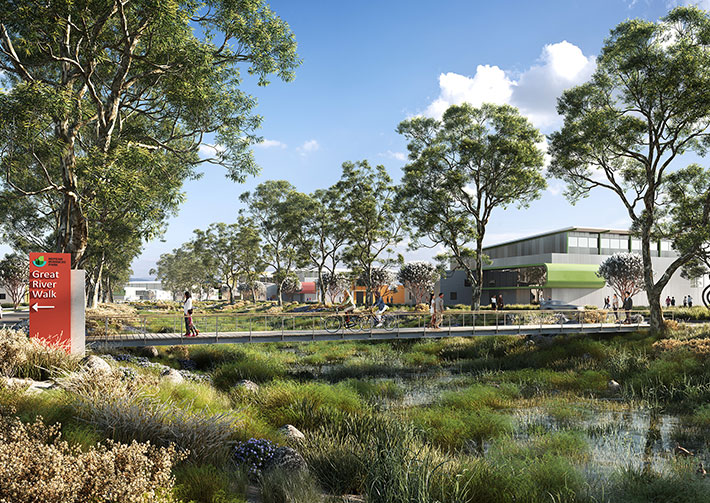
Disclaimer: These articles are not intended to provide medical advice, diagnosis or treatment. Views expressed here do not necessarily reflect those of Pittwater Online News or its staff.
